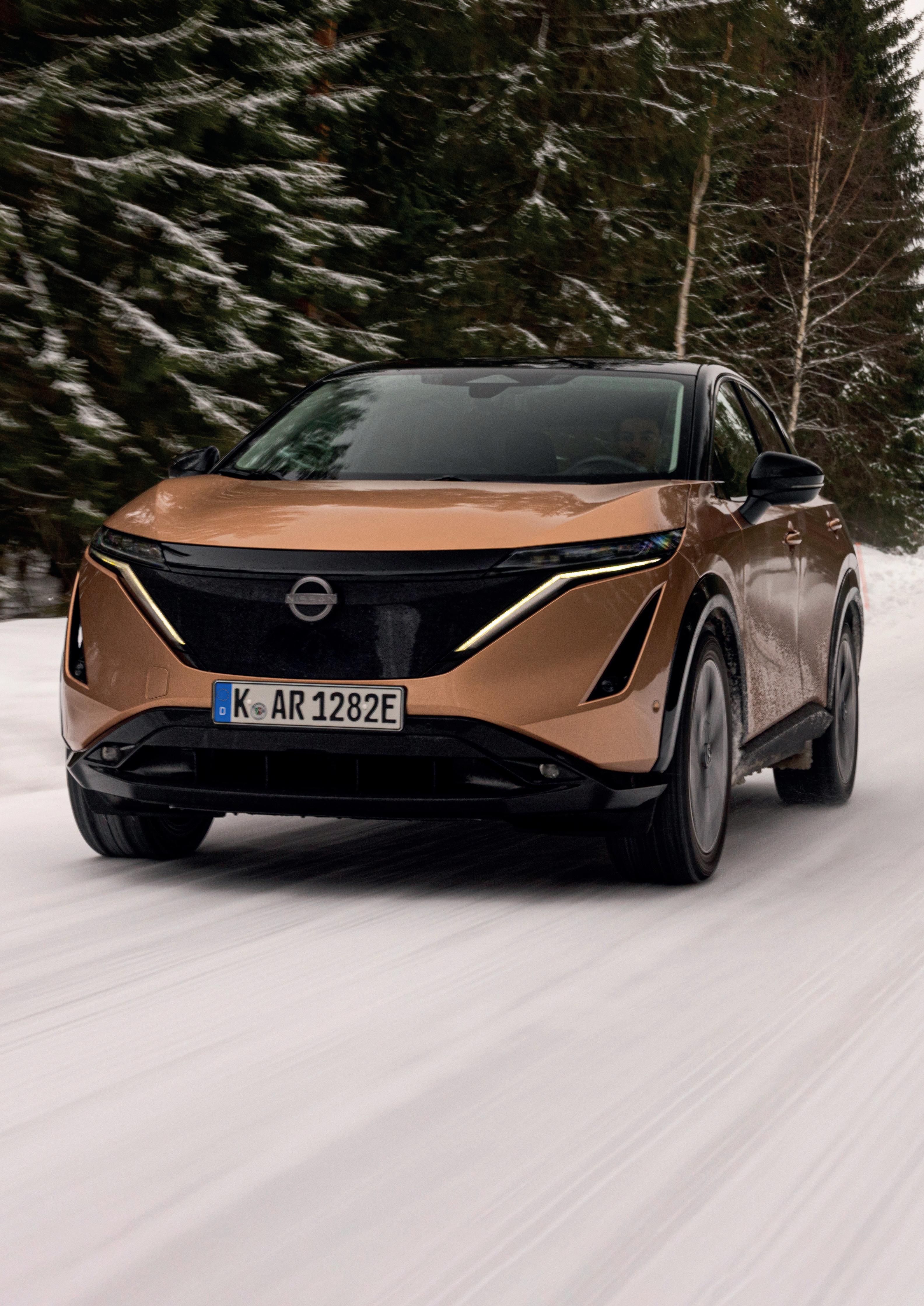

Enjoy

Whether it’s local deliveries or long-range journeys, we’re here to keep your drivers and your business powered up for the road ahead.
Allstar One Electric. Got yours yet? Allstar One



Enjoy

Whether it’s local deliveries or long-range journeys, we’re here to keep your drivers and your business powered up for the road ahead.
Allstar One Electric. Got yours yet? Allstar One
Welcome to the April edition of Turning Electric, and straight off the bat, we’re getting political.
It’s been almost a month since Chancellor Jeremy Hunt saw fit to completely ignore the EV sector in his Budget statement and the criticism is still pouring in.
Once again, ICE drivers were thrown the crumb of frozen fuel duty but there was nothing in Hunt’s speech to offer hope or encouragement to EV owners or prospective buyers. And it’s clear this has caused consternation in the industry.
Over the last few weeks, I’ve spoken to senior figures from across the car making world – from budget brands like Dacia to premium players like Polestar – and they’ve all said the same thing – they were surprised and disappointed by the Chancellor’s decision to ignore the EV sector in his statement.
The Zero Emissions Mandate came into force this year, requiring car makers to ensure 22% of their new car sales are EVs, yet the government is doing nothing to encourage this shift. While fleet EV registrations continue to grow, the retail sector is starting to struggle and everyone I spoke to believes there is a need for government intervention if the industry is to meet Downing Street’s targets.
As more than one executive pointed out, the UK is virtually the only country in Europe to offer no incentives for private EV purchases. In contrast, in France, the government has had to suspend its grant scheme due to oversubscription, proving that the carrot is more effective than the stick.

There are differences in opinion on the form incentives should take but all agree that setting expectations on drivers and retailers while chipping away at what little support exists is the wrong path.
There appears to be a lot of support for proposals from the Society of Motor Manufacturers and Traders. The industry body wants to see VAT on new EVs halved and the luxury car tax exemption retained to stimulate private purchases. Cutting purchase prices on new cars will certainly help sway some buyers who are already on the fence, but the story from manufacturers and those in the infrastructure sector is that we also need action to make charging more palatable via a cut in VAT on public charging.

It’s clear that the auto industry is singing from the same hymn sheet but it’s less clear whether our politicians are listening.
On a lighter note, I spent some time this month finding out how EVs can be fun. Firstly sliding around the frozen lakes of Finland in Nissan’s impressive Ariya – you can read about that on p14. Closer to home, I got behind the wheel of the Porsche Taycan 4S Cross Turismo, which proves that EVs can do more than just go quickly in a straight line (p20).
I also sat down with Luke Broad of Dacia UK to discuss the brand’s entry in the EV market and, prompted by that chat, we’re running down the top 10 cheapest electric cars on sale on p28.
In the motorsport world, we’re catching up with the latest Formula E results and hearing from Jaguar TCS Racing driver Nick Cassidy ahead of the team’s 100th race. And, if that’s not enough, we’ve been looking into which supermarkets are leading the field in public charging, and discovering the best parts of Britain for an e-bike tour.
As always, we have more news, features and opinions waiting for you inside. Enjoy the read!




Editor
Matt Allan
Associate Editor Cherry Martin
Graphic Designer
Content Sales Manager
Laura Phillips
Capital Business Media, Group MD
Richard Alvin
Business Development Director
Stephen Banks
Chief Creative Director Stuart Hyde Finance Director Andrew Martin

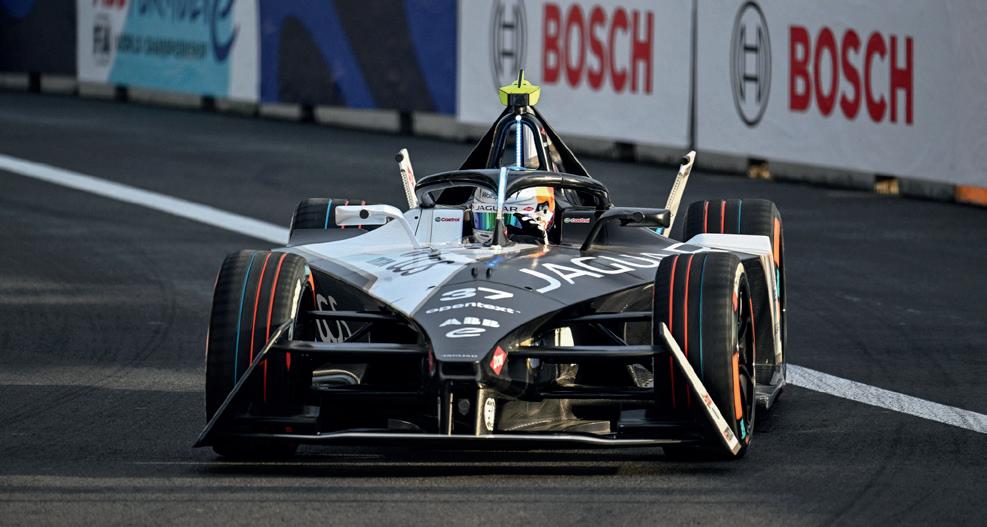


Skoda has revealed plans for a new all-electric compact SUV set to cost less than £25,000 when it goes on sale next year.
The Skoda Epiq is the second of six new EVs coming from the Czech brand in coming years, following the Elroq, which will launch later this year.
Skoda says the Epiq will offer up to 249 miles of range and cost “around 25,000” (£22,000).
There was no word on the Epiq’s powertrain but it will be based on the same MEB Small platform as the forthcoming VW ID.2All and Cupra Raval and built alongside them in Pamplona, Spain. Both of those have been revealed to be using a 222bhp front-mounted motor, so the Eqip is likely to follow suit. Skoda also confirmed that the Epiq will support bidirectional charging.
At 4.1 metres long, the Epiq is around the same size as a Skoda Fabia but Skoda says it will offer space for five people and up to 490 litres of luggage space.
Announcing the car’s name, Skoda also released a digital design study
giving strong hints as to how the car will look. Using the same ‘Modern Solid’ design philosophy as the much larger Vision 7S from 2022, the Epiq is a squat, squared-off model with hints of Skoda’s existing SUV line-up.
Like the Vision 7S, the Epiq features Skoda’s Tech-Deck Face which hides devices like the distance radar and the front camera behind a glossy black fascia. T-shaped LED running lights sit either side of this, with the Matrix LED headlights mounted below them. Robust front and rear bumpers give a more rugged appearance but Skoda is clear that the Epiq is designed largely for urban motoring.
Oliver Stefani, head of Skoda Design, said: “Our new design language –Modern Solid – represents the next level of modernity. Smart functionality and practicality are harmoniously balanced by attractive new looks and our sustainability approach. The Skoda Epiq design study perfectly

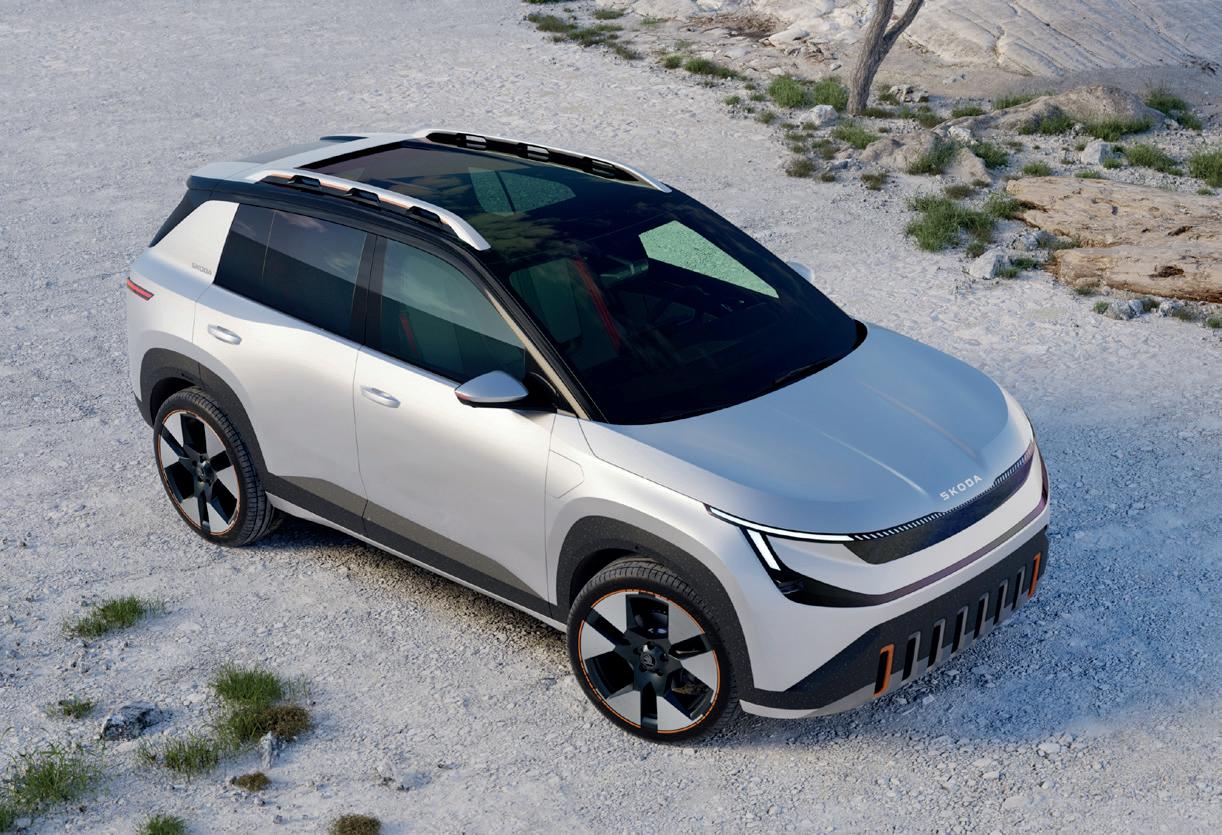
embodies all the key attributes of the new design language.”
The interior will have a focus on durable, practical and sustainable materials and bring the Modern Solid approach to the car’s cabin. A two-spoke steering wheel features Skoda’s new brand lettering as well as physical buttons and haptic scroll wheels with Flashy Orange accents. A free-floating centre console features an open storage compartment with wireless phone charging and Skoda says there will be a host of “Simply Clever” compartments for even more storage options. Like the Enyaq, there’s a slimline digital instrument display and a large central touchscreen.
The boot also benefits from some of the brand’s trademark features such as bag hooks, cargo elements, fastening hooks and a hidden underfloor compartment.
Klaus Zellmer, CEO of Skoda Auto, commented: “The coming Skoda Epiq will package a lot of car for an attractive price and a big interior with a compact size. Our customers want choices, which is why we are expanding our growing e-mobility portfolio into this popular segment.
I hope these first design teasers demonstrate that the Epiq will shine because of its modern design, everyday range and user-friendly technologies – all of it affordable.”

Peugeot has revealed its new E-5008 seven-seat SUV with three electric powertrains and a class-leading range.

Entry-level models feature a single 207bhp motor with a 73kWh battery for up to 311 miles of range. Above that a 227bhp motor and 98kWh battery pairing gives a 410-mile maximum range. For those more interested in performance, there’s a dualmotor option with 316bhp and a 311-mile range. All versions of the E-5008 feature 160kW DC charging for a 20-80% charge time of 30 minutes, and 11kW AC charging.
The E-5008 sits above the E-3008 and joins a relatively shallow pool of seven-seat EVs alongside Peugeot’s Rifter, the Mercedes EQB and the Kia EV9. Peugeot says it offers class-leading room in row three and up to 748 litres of boot space in fiveseat setup.
The E-5008 will arrive in the UK in the autumn and there’s no word on pricing yet but Peugeot is keeping specifications simple with just Allure and GT trims and three options packs.
Volkswagen has unveiled three new GTX models to extend the performance-focused arm of its EV business.
The ID.3 hatchback, ID.7 fastback and estate and the ID.Buzz van have all received power boosts and battery upgrades as part of the roll-out.
For the first time, the ID.3 shares the 79kWh battery with the two larger cars, which VW says should give a range of up to 373 miles. The ID.7 and ID.Buzz also get the option of an 86kWh battery, although there’s no word on range.
Power for the rear-wheel-drive ID.3 increases to 282bhp for the regular GTX model and 322bhp in cars with the performance pack. The two larger models add a second motor on the front axle, giving them up to 355bhp and allwheel-drive.
All three models get GTX styling upgrades including revised front end bodywork, unique ‘arrowhead’ running lights and bespoke interior fabrics and trim. There’s no word on price yet, with all three models due on sale later in 2024.



Audi has announced prices and technical details for its new Q6 e-tron electric SUV.
The rival to the BMW iX3, Jaguar I-Pace and Tesla Model Y will be available to order from April, with prices starting at £68,975.
At launch, the Q6 e-tron will be available in two all-wheel-drive variants, with cheaper, more efficient rear-driven versions joining the range later. In the regular Q6 e-tron quattro, dual motors will produce a total of 383bhp, offering a 0-62mph time of 5.9 seconds. The £92,950 SQ6 e-tron will pack 510bhp, taking the 0-62mph time down to 4.3 seconds.
The Q6 e-tron uses a new 94.9kWh battery which Audi says will offer up to 381 miles of driving and go from 10-80% in 21 minutes thanks to 270kW charging.
Inside, a new design approach means the main instruments and touchscreen curve around the driver’s seat, with a 11.9-inch digital instrument panel and 14.5-inch touchscreen. For the first time, passengers get their own 10.9-inch screen on which they can manage the media and navigation.
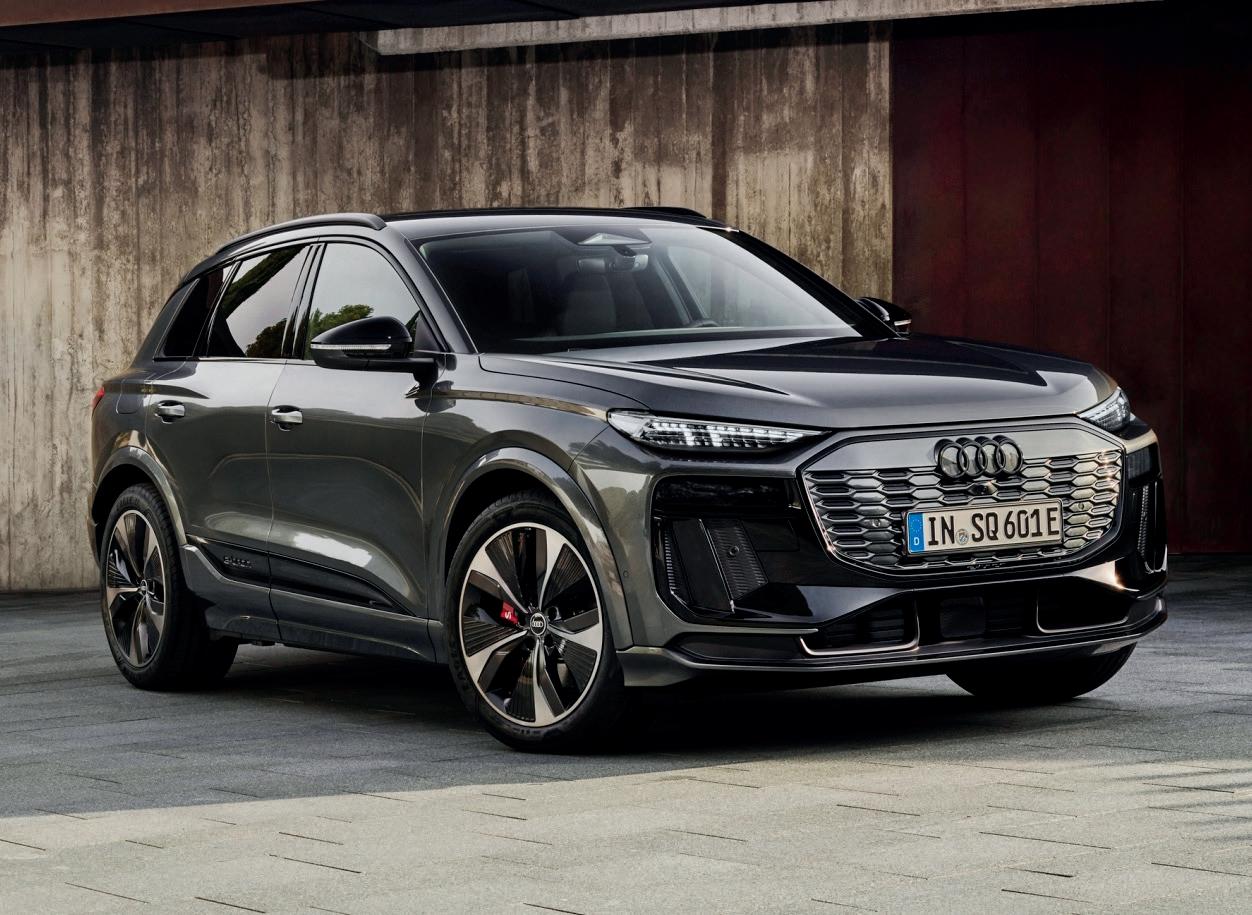
The David Beckham-backed venture said it was ceasing all operations while it restructured but intended to restart operations at a later date.
Initially, the industrial vehicle arm of the business – Lunaz Applied Technologies (LAT) – was placed into administration, with 40 jobs under threat. At the time, Lunaz Group insisted that the classic car side of the business remained operational. However, within days, it confirmed that Lunaz Design, responsible for converting classic cars such as RollsRoyces and Bentleys had also ceased operation.
A spokesperson said: “The Lunaz Group is currently restructuring to adjust its business and operations in response to shifting market dynamics. These are caused by delays to the legislative requirement for fleets to transition to zero-emissions vehicles.
“All operating entities of the company have stopped operations with an intent to restart under a new structure to meet current and future demand for the company’s passenger and commercial vehicle products.”

EV conversion specialist Lunaz Group has stopped all production and called in administrators.
The government has extended the Electric Vehicle Chargepoint Grant to households without off-street parking. The £350 grant will now be available to homeowners and tenants who have access to ‘adequate’ on-street parking to help install a charger and crosspavement system such as a cable gully.
Volvo is aiming to cut charging times by up to 30% thanks to a new partnership with Breathe Battery Technologies. Volvo will use Breathe’s battery management software to monitor battery health and enable dynamic charging, which it says brings significantly shorter charging times while minimising the risk of battery damage.
Polestar has opened its first retail space in Scotland, in Glasgow’s Silverburn Shopping Centre. The ‘Space’ is the brand’s seventh UK location and its opening comes just ahead of the launch of the Polestar 3 performance SUV and the Polestar 4 coupe-SUV.
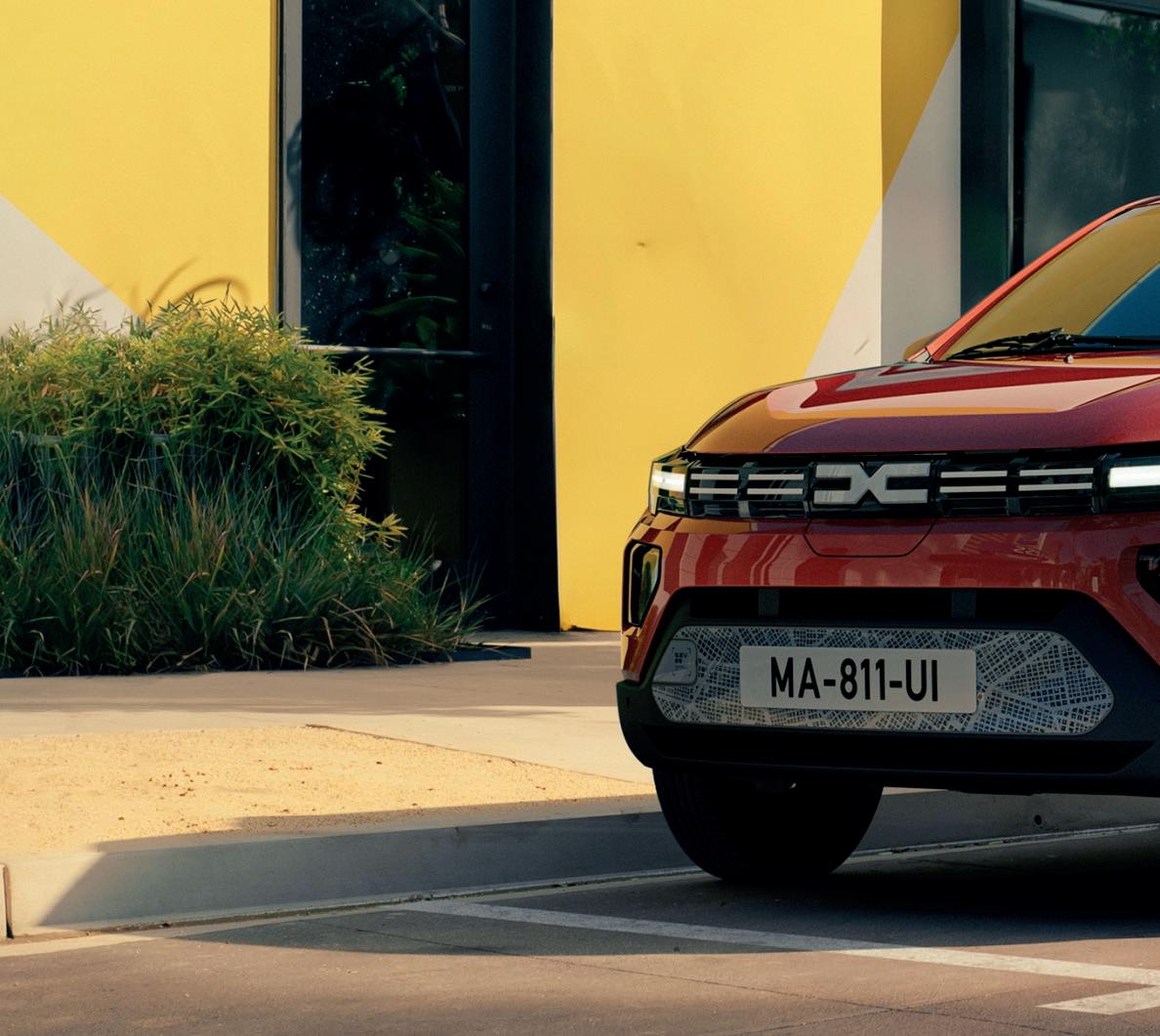

In early March, Dacia revealed that its new Spring model would cost just £14,995, undercutting its nearest rival by more than £7,000 and potentially transforming the EV market at a stroke.

So we sat down with Luke Broad, Brand Director at Dacia, to find out more about the Spring, how Dacia aims to simplify EV ownership for drivers and what he thinks needs to be done to make EVs more accessible.
Tell us about the Spring and how Dacia has managed to make it so affordable.
What we like to say at Dacia – one of the things that we would have tattooed on our arms if we had to – is that Dacia is the best value for money brand that constantly redefines the essentials. And the Dacia Spring really embodies everything that Dacia is all about.
The car is an A-segment car, so think Renault Twingo, Fiat 500 size. It’s quite a small car, but it’s really designed for one purpose, and that is as a small city car. So it’s for people who are going to the shops and back, they might have the occasional journey up the dual carriageway.
And the way that we’ve managed to bring it to the market at such an affordable price is by looking at what is essential for the vast majority of EV owners today and building a car that caters to those essentials.
Yes. Today, the majority of the market is heavy vehicles that have quite large batteries and therefore they also have quite large costs. That’s fine because those are right for a lot of people, but there’s also a lot of people who can’t afford the entry ticket to buy one of these cars. Electric
vehicle ownership is just not within their capability today, so what we want to achieve with the Dacia Spring is to make it much more accessible for people to make that EV transition.
The car is available from £14,995 and it’s not like we’ve launched with a really cheap entry spec and then have a really expensive one. The top trim is only £16,995 with all the bells and whistles, such as Apple CarPlay, Android Auto and vehicle-to-load functionality.
This is not a basic car, it’s an essential car, and we’ve put into the car what people use and what adds value to their everyday lives. And we’ve done it at an affordable price, which stays true to the Dacia brand philosophy.
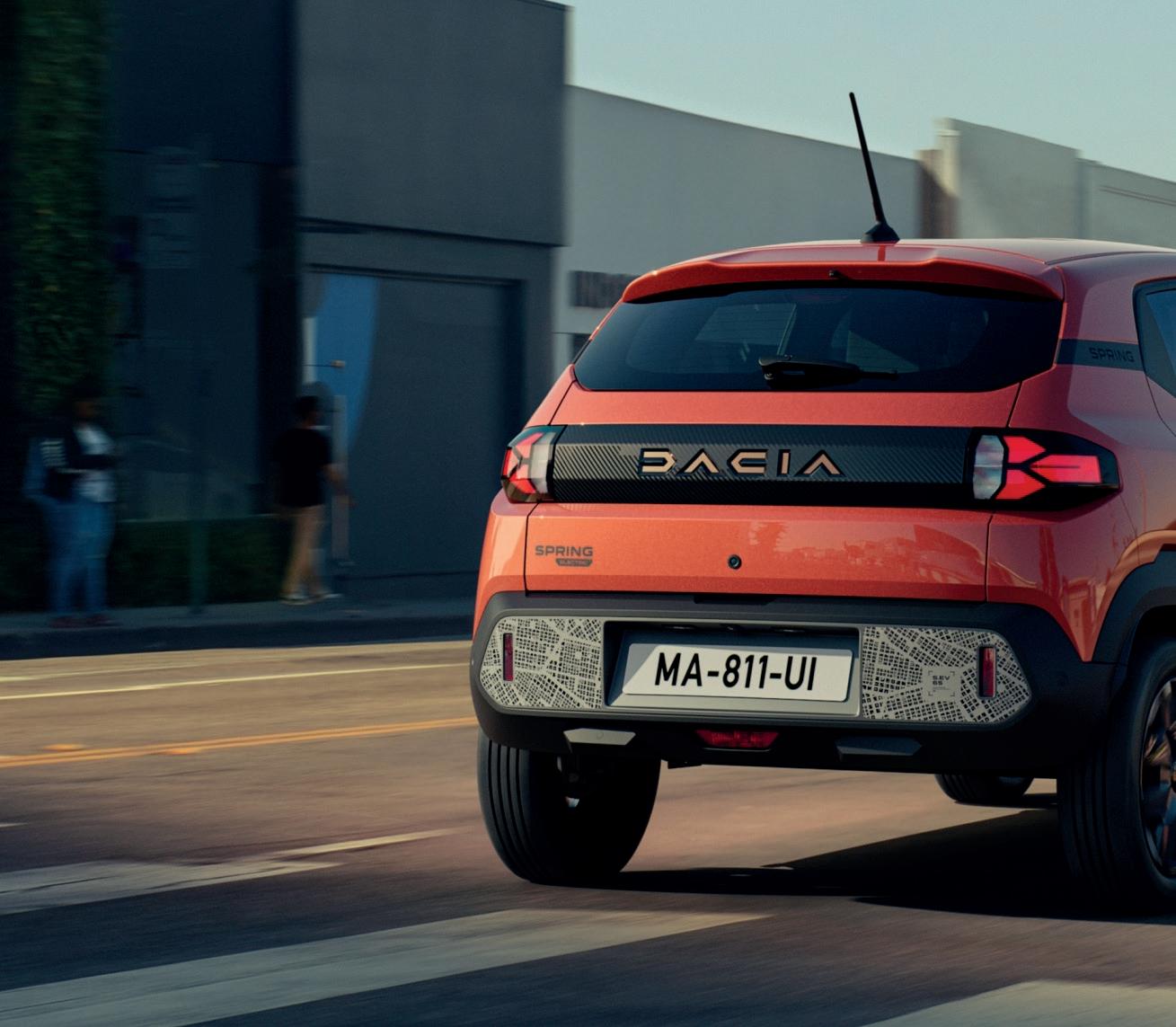
Clearly there are some compromises – such as range and charging speeds – so how did you settle on the right balance between range, charging speeds and keeping the cost down?
Dacia is lucky enough to be part of the Renault Group and we’ve been playing in the electric vehicle game now since 2010. So as a group, we have the expertise and the knowledge in this field and over that decade or more, we’ve got lots of data.
That data showed us people who buy Renault Group electric cars are travelling on average 23 miles per day. So we took this idea and said, well, if people are only travelling this far per day, do we actually need
to design a car at Dacia that has a 400-mile range?
While some people have requirement for this, and it’s really important to them, a lot of people don’t because they jump in their car, they take the kids to the school, they nip to the shop and back.
So we designed a car with a modest size battery –at 27kWh. It’s not huge, but because the battery isn’t huge, the car is super efficient. It’s under a tonne. And because it’s under a tonne, it’s not having to lug around a lot of weight and because it doesn’t have to lug around a lot of weight, it’s really efficient.
And it also means we’re not charging customers for a big heavy battery that they’re carrying around that the vast majority of people don’t use the full capability of.

It’s all about designing a car that is really specific and to be clear has its compromises for some people. I’m not going to say this car is for absolutely everybody. But for people using it as a second car or for people using it as a primary car within the city, it’s an interesting proposition because the price is right, the technology is right, and the efficiency is right. Although the range is average – 186 miles urban, 137 miles mixed usage – for those people who are using it as a second car as a runaround, it actually it makes a lot of sense. And when you’re charging overnight at home on one of the 7 pence per kilowatt hour rates, you’re talking two quid to fill your car up. So the whole ownership model makes a lot of sense. And combined with that lower purchase price, it becomes quite difficult to ignore.
What we like to say at Dacia –one of the things that we would have tattooed on our arms if we had to – is that Dacia is the best value for money brand that constantly redefines the essentials. And the Dacia Spring really embodies everything that Dacia is all about. “
Obviously you feel that these lower price options are going to be important in getting people into electric vehicles but is there still scope for support or incentives for private buyers or is it all down to car makers to build more cheap EVs?
I actually think it’s a bit of both. A lot of the battery electric vehicle sales today are being driven by
fleet customers. These are vehicles bought through companies, effectively on salary sacrifice. But for retail customers battery electric cars have been challenging. On retail, could the government help? Of course, but we don’t count on government help.
The SMMT recently shared some interesting proposals that I think would really help stimulate retail demand on electric cars. This is things like halving the VAT rate on electric cars. It also includes things like the luxury tax VED rate on electric cars, perhaps reducing this and normalising it. And the third thing is reducing the VAT rate on public charging infrastructure so that it is aligned with charging your car at home.

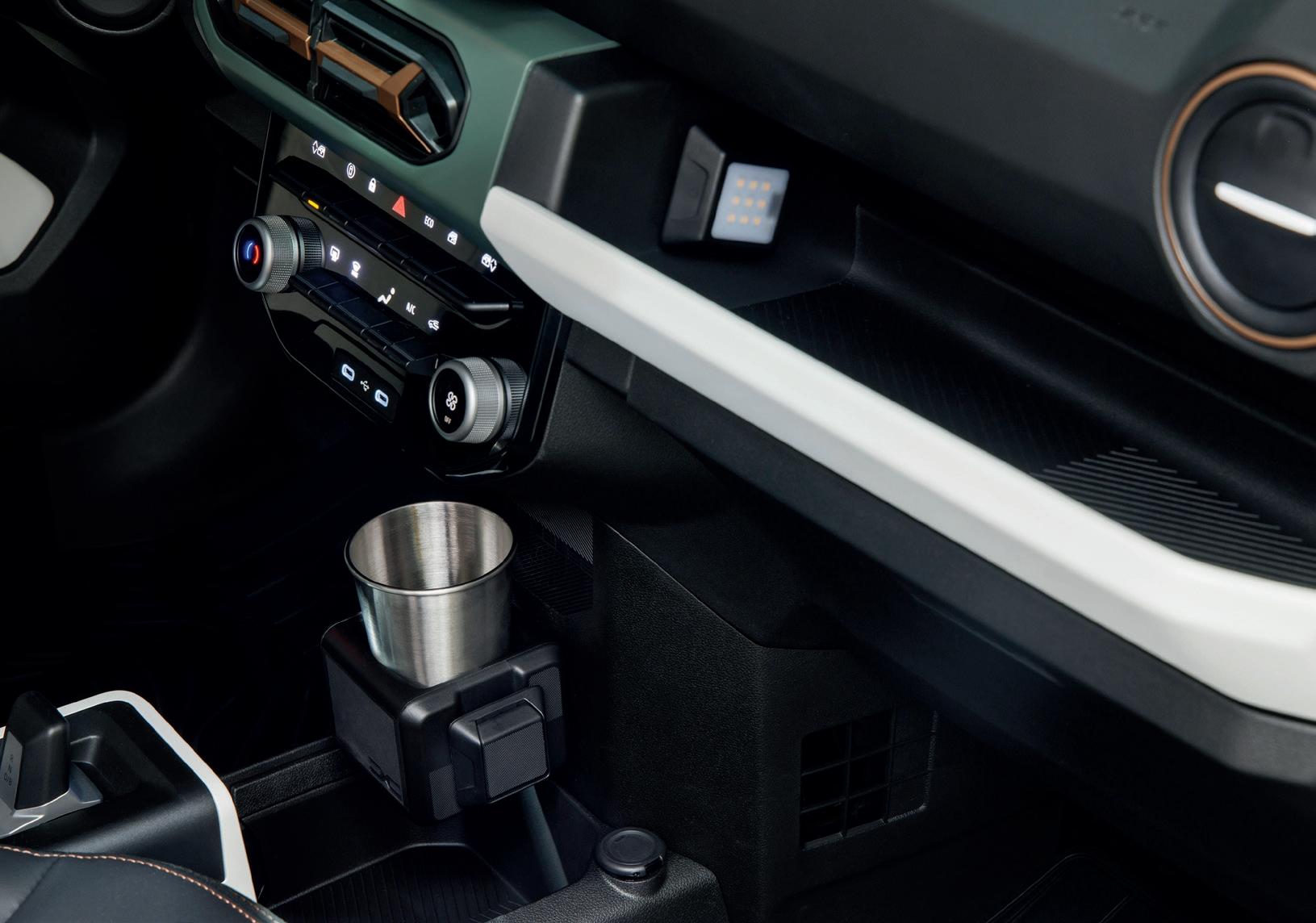
They’re only small, but I would say significant incentives. And anything that the government will do will of course help stimulate retail demand. One of the major barriers is, of course, price. So we addressed that with the Spring. But you also have the additional things that people are worried about. How do I charge? Range anxiety. All these things that we have to explain and discuss with our customers.

Yes. People are used to talking in miles per gallon. How big is the fuel tank in litres? All of a sudden you’re switching to a totally new vocabulary and people are asking what does all this mean? How much is all of this going to cost?
So I would say we need to explain in a very simple way to customers. It’s basic things like agreeing on a unified set of languages and how we measure things. We’re doing that slowly but surely and I think with this car in particular, because it is so simple and affordable and easy to use, we as a brand have an opportunity to demystify the whole EV buying experience.
Spring is obviously Dacia’s main focus now but what’s next in terms of electrification for Dacia?
Because we are part of Renault Group and because all the R&D and investment has already been paid for by the Renault brand, it’s really easy. We just decide, what do we want to take? When do we want to take it? We can go [early], but the strategy is not to go with the market on Dacia. The strategy is to go as late as possible or when people are ready to make the switch.
We can be pretty flexible in when we decide to electrify our power trains. So if you ask me the question directly: ‘when will Dacia go fully electric?’, then my answer to you would be the 31st of December 2035.
We are the affordable mobility brand of Renault group. For people who want to be ahead of the times with technology, with mileage, with range, with all of this exciting, cool stuff, then we have a solution in Renault. But for those who want to maybe take things a bit slower, take things a bit more affordable and have technology that is proven, but is essential and adds value to their life, then we’re here for that. But of course, we will slowly but surely begin to electrify our entire range of products.


FINLAND IS KNOWN AS THE LAND OF 1,000 LAKES, ALTHOUGH GLANCING OUT OF THE WINDOW OF OUR NISSAN ARIYA , IT’S NOT IMMEDIATELY APPARENT WHY.
All around in either direction everything is white - from the treetops and road to the fields on either side. There’s not a lake to be seen. Then a glance at the sat nav reveals that those fields are bodies of water, hidden beneath a thick blanket of snow and ice.

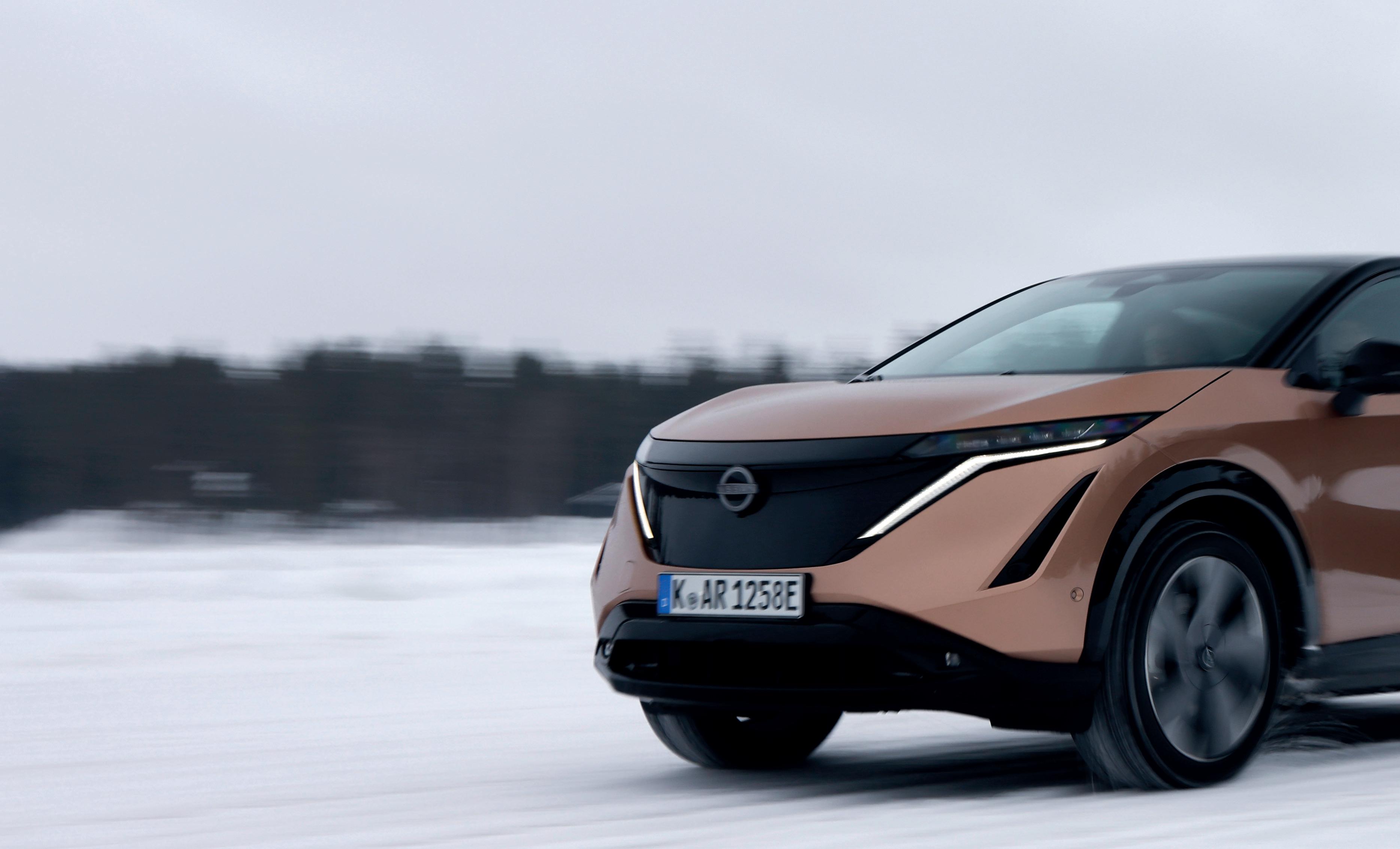
It’s an interesting choice of location for an EV driving event but Nissan seems confident that it’s a good place to let us loose in the Ariya - its much-awaited follow-up to the groundbreaking Leaf.
The Ariya is a very different prospect to the Leaf – a large, premium-tinged SUV with striking styling and some clever technology on board. We’re here partly to see how this family EV with its 87kWh battery copes with the sub-zero temperatures and partly to learn how Nissan’s e-4orce four-wheel-drive system is taking full advantage of an all-electric powertrain.
Our first challenge is to get from Helsinki airport to our base on the shores of Lake Kuorevesi, some 150 miles away. Most of that is straightforward motorway slog
Sitting in the quirky cabin with its blue suede dashboard and paper lantern-inspired lighting, you’re aware that this is the most highquality car Nissan has built and one that offers impressive space, comfort and composure even on some pretty poor surfaces. “

which doesn’t do much to showcase the drivetrain but does highlight the Ariya’s ability to cover long distances with remarkable refinement.
Sitting in the quirky cabin with its blue suede dashboard and paper lantern-inspired lighting, you’re aware that this is the most high-quality car Nissan has built and one that offers impressive space, comfort and composure even on some pretty poor surfaces. What’s more, over three hours of driving at 70mph with the outside temperature below freezing, there’s never even a twinge of doubt over its range.
Turning off the motorway for our last few miles, we get our first taste of what the next two days have in store. We strike out onto roads buried beneath a thick layer of snow, cutting between handsome wooden
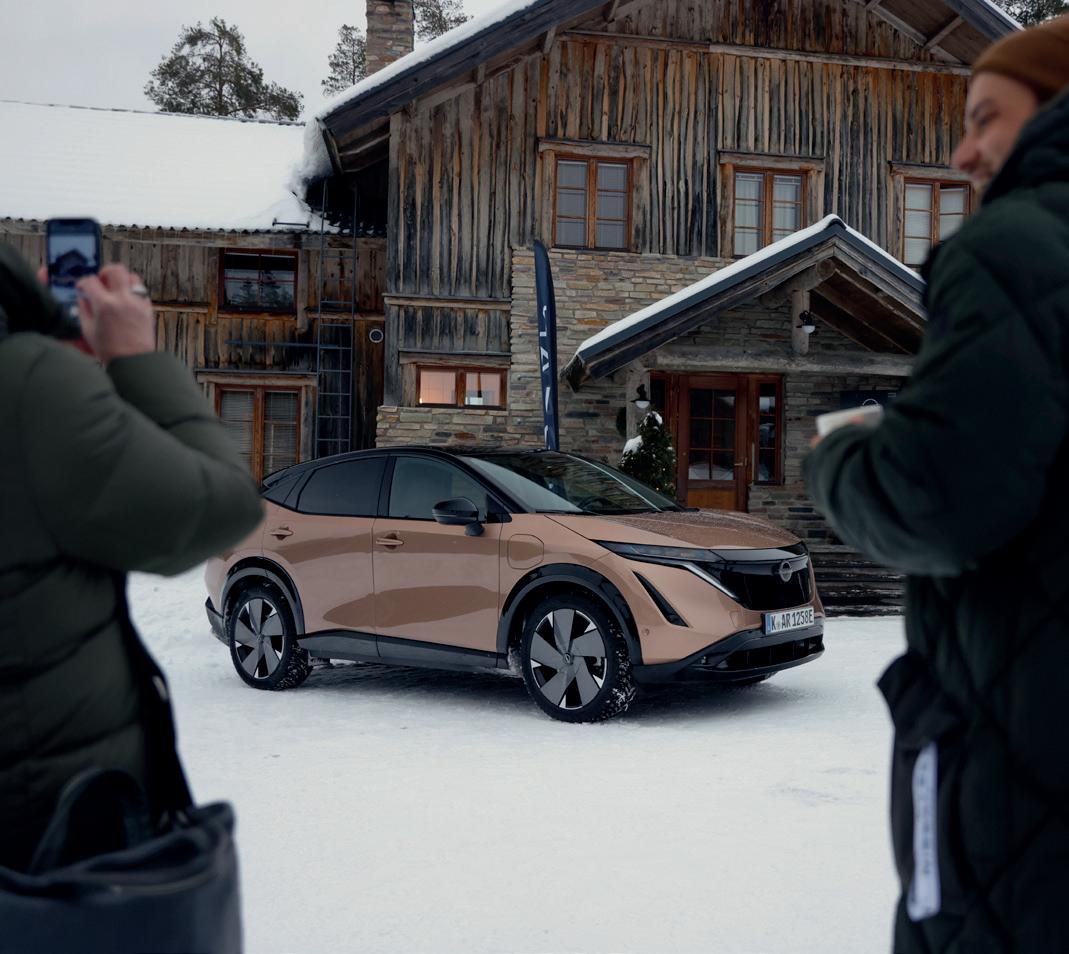

homes painted in vivid reds and yellows. There’s an eerie, heavy silence to our surroundings that’s barely disturbed by the buzz of the Ariya’s motors.
After a hearty meal and a restful night’s sleep, we’re up in the early morning half light. Ahead of us is a day of testing the car in extreme conditions that ranges from strawberry fields buried beneath a metre of snow to ice-covered waterways.
Finland is famous for producing some of the world’s best rally drivers and it’s easy to see why. Led by rally driver Max Vatanen (son of the legendary Ari) we trek out in our Ariyas along the Finnish equivalent of a British B-road. Taking a short detour over one of those 1,000 frozen lakes we head onto narrow, undulating stretches used regularly as rally stages.
The fact we stay neatly between the snow banks rather than buried axle-deep in them is undoubtedly thanks in part to the cars’
studded winter tyres.
A single millimetre of metal might not sound like much but it’s enough to bite into surfaces that would have regular rubber slipping and spinning uselessly.

We zip along country lanes that twist and duck between huge stands of pine trees on the sort of snow and icecoated surfaces that would bring the UK grinding to a halt. There’s no tarmac in sight and the edge of the road is marked simply by branches jammed into snow banks. To us Brits it is bizarre and intimidating. To the Finns, it’s just a regular day. That’s reflected in the fact that we’re buzzing along at the national speed limit of 80kph despite everything around us being a uniform white. The fact we stay neatly between the snow banks rather than buried axle-deep in them is undoubtedly thanks in part to the cars’ studded winter tyres. A single millimetre of metal might not sound like much but it’s enough to bite into surfaces that would have regular rubber slipping and spinning uselessly.
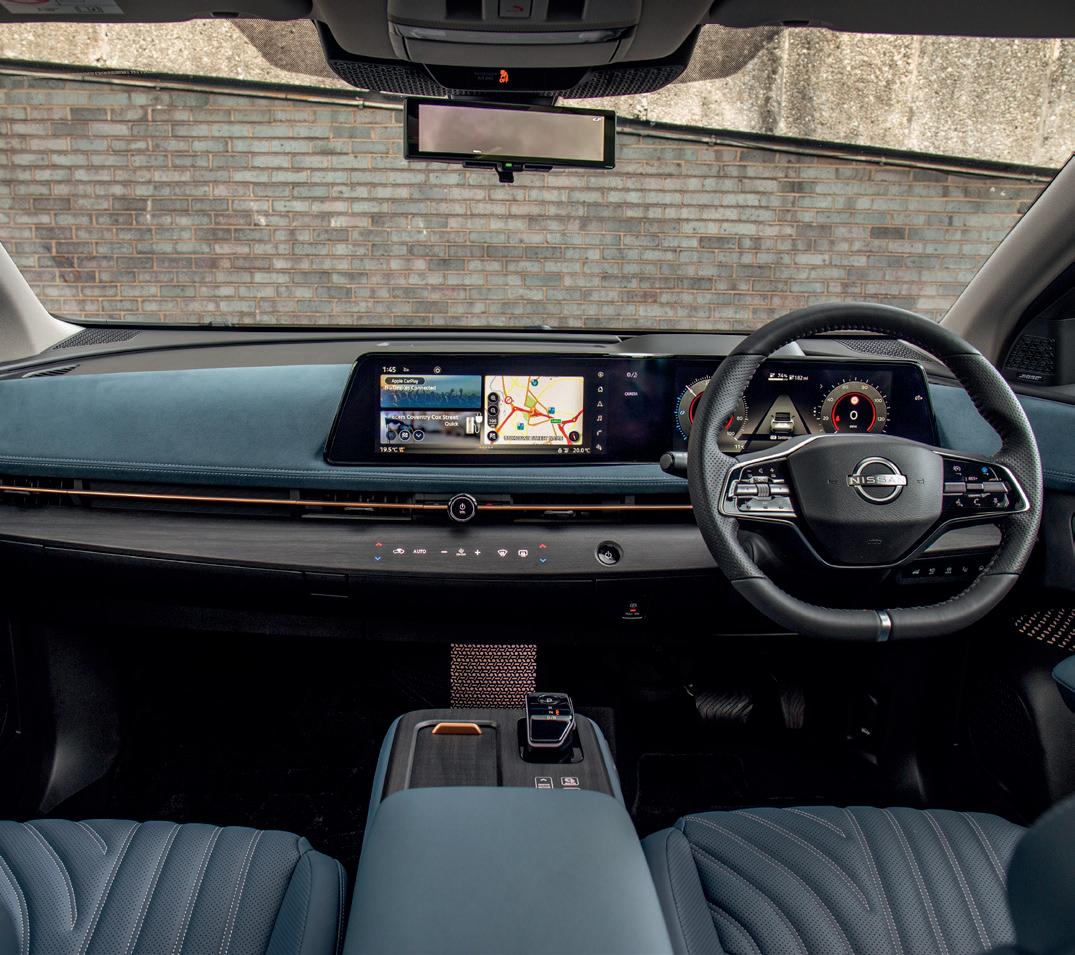




But the Ariya’s e-4orce four-wheel-drive system has its part to play in giving us the confidence to drive like the locals. Like so many well calibrated systems, it gets on with its work unobtrusively. Under the surface the system is responding 10,000 times a second, adjusting the twin motors’ torque distribution and wheel braking to keep the car pointing in the right direction. From the driver’s seat you simply feel the car going where you want it to, when you want it to, even on these slippery, bumpy roads.
The impact of the e-4orce’s drive modes are laid bare on the frozen surface of Lake Kuorevesi. Here, Nissan has kindly carved out a twisting track through snow banks on the 60cm-thick ice. There are even mocked-up roundabouts where we’re challenged to get the car to misbehave.
Under the watchful eye of Lora - another Finnish rally driver - I work from snow mode, through normal and sport before deactivating the stability control entirely. And it provides a clear demonstration of how well these systems keep you in line, even if you’re not aware.
In the most intrusive snow mode, stupid applications of throttle and steering lead to an occasional lurch towards understeer before the system pulls everything back into line. Tapping through the modes via the haptic panel on the centre console leads to later intervention and a bit more sliding around, right up to turning everything off. At which point we slide, literally, between playful drifts and shambolic 180-degree spins.
Under the surface the system is responding 10,000 times a second, adjusting the twin motors’ torque distribution and wheel braking to keep the car pointing in the right direction. From the driver’s seat you simply feel the car going where you want it to, when you want it to, even on these slippery, bumpy roads.
Trying to find the limits of car and driver is great fun in the safe environment of a private track. But stuffing the car into a snow bank proves just what a potentially life-saving difference a well-managed four-wheel-drive system can make out in the real world.
With the systems very much turned back on, we head back off the ice and onto the snowy-covered roads once more. Making calmer progress, it’s easier to appreciate the work that’s gone into the Ariya. It isn’t as pioneering as the Leaf was but it gives Nissan a serious contender against the likes of the VW ID.4, Kia EV6, Ford Mustang Mach-e and Toyota bZ4X.
As well as its high-quality and utterly unique interior, the Ariya offers an impressive range of powertrain options and abilities. Our Evolve-spec car offers startling acceleration for such a large car - 0-62mph in 5.7 seconds - while returning up to 309 miles of range. Even in cold weather, the on-board heat pump and battery preconditioning help get the most out of the battery, while 130kW charging offers a fairly rapid top-up.
Lower-grade cars make do with a smaller battery and single motor, while there’s the Evolve+ spec that turns up the twin motors to 389bhp (from 302bhp). Whether that’s necessary is questionable, but based on my experience, the added control and confidence of the e-4orce models is well worth having, even if you never find yourself on a frozen lake.
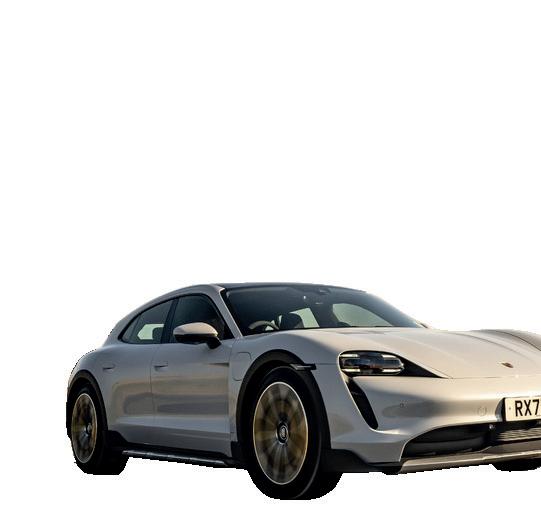
It’s fair to say that estate cars have fallen out of favour in recent years.
SUVs have become the go-to mode of transport at almost every price point and that’s as true of the electric car market as it is of old-fashioned ICE vehicles.
We’re seeing an increasing number of battery-powered hatchbacks cropping up but, by my reckoning, until the BMW i5 Touring arrives, there are still only two electric estate cars on the market. On one hand you’ve got the MG5 from the budget British/Chinese outfit MG. On the other you’ve got the Porsche Taycan Turismo. Separated by about 250bhp and £57,000 they’re quite the odd couple.
We’ll get round to testing the MG soon but today, we’re concerned with the most practical variant of the Taycan, the Cross Turismo. Not only is it an estate but it’s one with (very mild) off-road pretensions, some body cladding and the ability to jack up its suspension to cope with terrain more rugged than your average B-road.
Visually, you might expect a crossover-tinged estate version of a sports saloon to look ridiculous but the Cross Turismo doesn’t. The Taycan’s low front end with its quad-LED headlights is largely unchanged and raising and stretching the rear roof has done nothing to dent its visual appeal. A sliver of plastic body cladding and a mild suspension raise compared with the Sport Turismo complete the “Cross” look and add an air of purpose without overdoing things.


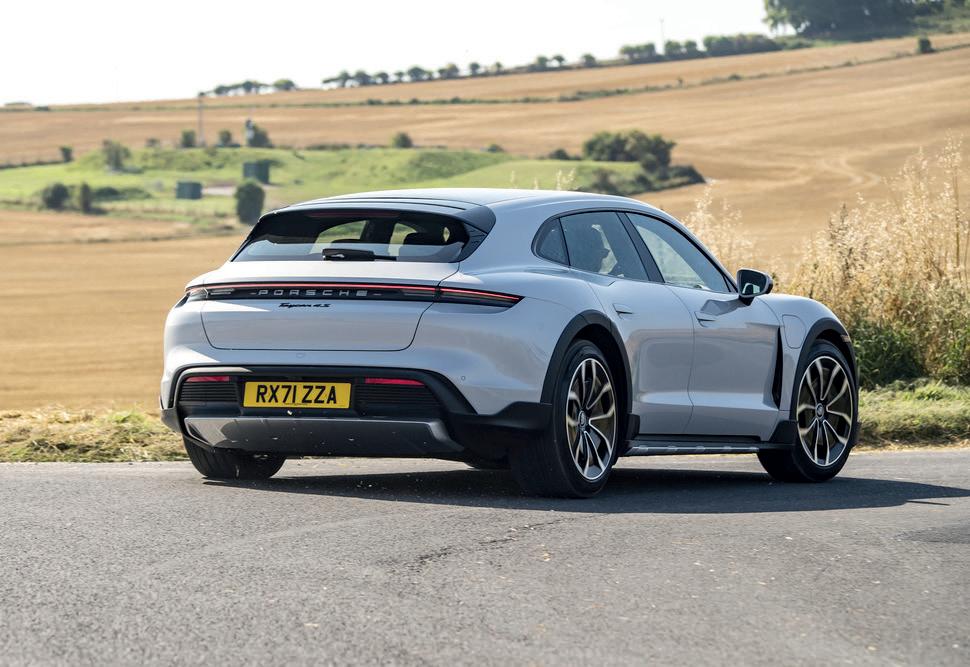
Inside, the differences to other Taycans are minimal. That’s a good thing since the Taycan’s interior is a spacious, comfortable and high-tech environment with a sharp simple design. Three big digital screens dominate the low-set dash, with a 16.8-inch instrument display partnered with a 10.9-inch media touchscreen. Beneath that there’s an 8.4-inch portrait screen that controls functions such as climate control and drive modes. Some physical heater switches would be preferable but the screen is at least big, responsive and helps reduce cabin clutter.
The big differences are behind the driver. Here, the flatter roofline of the Cross Turismo brings improved headroom and even those well over six feet tall have plenty of space beneath the giant panoramic roof. They also won’t struggle for legroom unless the driver is a similar size. The Taycan is a five-seater as standard but the huge transmission tunnel renders the middle seat useless, so you might as well tick the 2+1 seating option. This gives the outer two pews semi-buckets at the expense of a tiny hump for a middle seat.
Behind the seats, the Cross Turismo’s powered tailgate gives access to a long, wide boot offering up to 446 litres of luggage space. That can be expanded to 1,212 litres with the seats down and complemented by an 84-litre ‘frunk’. And to prove your lifestyle credentials, you can accessorise your car with everything from a rear-mounted bike rack to a ski carrier or roof tent. So far, so practical. But the joy of the Taycan is that it does all the comfortable, practical stuff while still feeling like a Porsche.
Beneath the skin of our 4S Turismo Cross is a two-motor, all-wheel-drive system with a 83.7kWh usable battery good for up to 296 miles. Total power is 483bhp, boosted to 563bhp with launch control activated. That’s good enough to get the Taycan from 0-62mph in 4.1 seconds in the most extreme drive mode. Even in less sporty drive modes, the Cross Turismo’s response is immediate and rapid. The all-wheel-drive system marshalls the power brilliantly, allowing for stable, secure and swift progress. And no matter how quickly or
As an all-electric all-rounder, it’s hard to think of anything that beats it.


slowly you’re travelling, a brush of the throttle brings an additional surge. Dial through the drive modes and the surge becomes a tidal wave.
Thankfully the throttle response is matched by quick, direct steering that has all the accuracy and nuance of any Porsche. There’s a level of communication that many EVs lack and that gives you utter confidence in the car, backed up by prodigious levels of grip.
But there’s no penalty to pay in comfort. The active air suspension works remarkably well to absorb the worst bumps while keeping the car completely controlled and flat. In Sport+ there’s a slight jitteriness but you can dial the dampers back to comfort without losing much at all in the way of balance or control. There’s even a ‘high’ mode to venture (slightly) off-road.
Adding to the sense of drama is Porsche’s Electric Sport Sound, which matches your throttle inputs with a synthesised ‘engine’ note. It’s not for everyone and can be turned off, but the spaceship-like whizzes and whirrs that rise and fall in pitch as you accelerate and brake are brilliantly different and fitting. Only the brakes let the package down. There’s too much pedal travel and not enough bite – something that could be fixed with a more aggressive regen setting.
So it’s practical and every bit the performance Porsche. So what’s the catch? That would be the price and Porsche’s relatively miserly approach to equipment. The £95,200 starting price for the 4S Turismo does bring adaptive air suspension, active aero, auto-dipping LED lights, a decent assistance package and luxuries like heated front seats. But chassis upgrades such as rear-wheel steering and torque vectoring ‘plus’ are options, as are touches such as a heated steering wheel, panoramic roof and 360-degree parking camera, which you’ll find on cars half the price. All-in, our test car with options totalled £116,149.
That’s a lot of money. But in fairness, the Porsche Taycan 4S Cross Turismo is a lot of car. As an all-electric all-rounder, it’s hard to think of anything that beats it. Nothing else quite matches the blend of space, usability, style and downright fun on offer here.
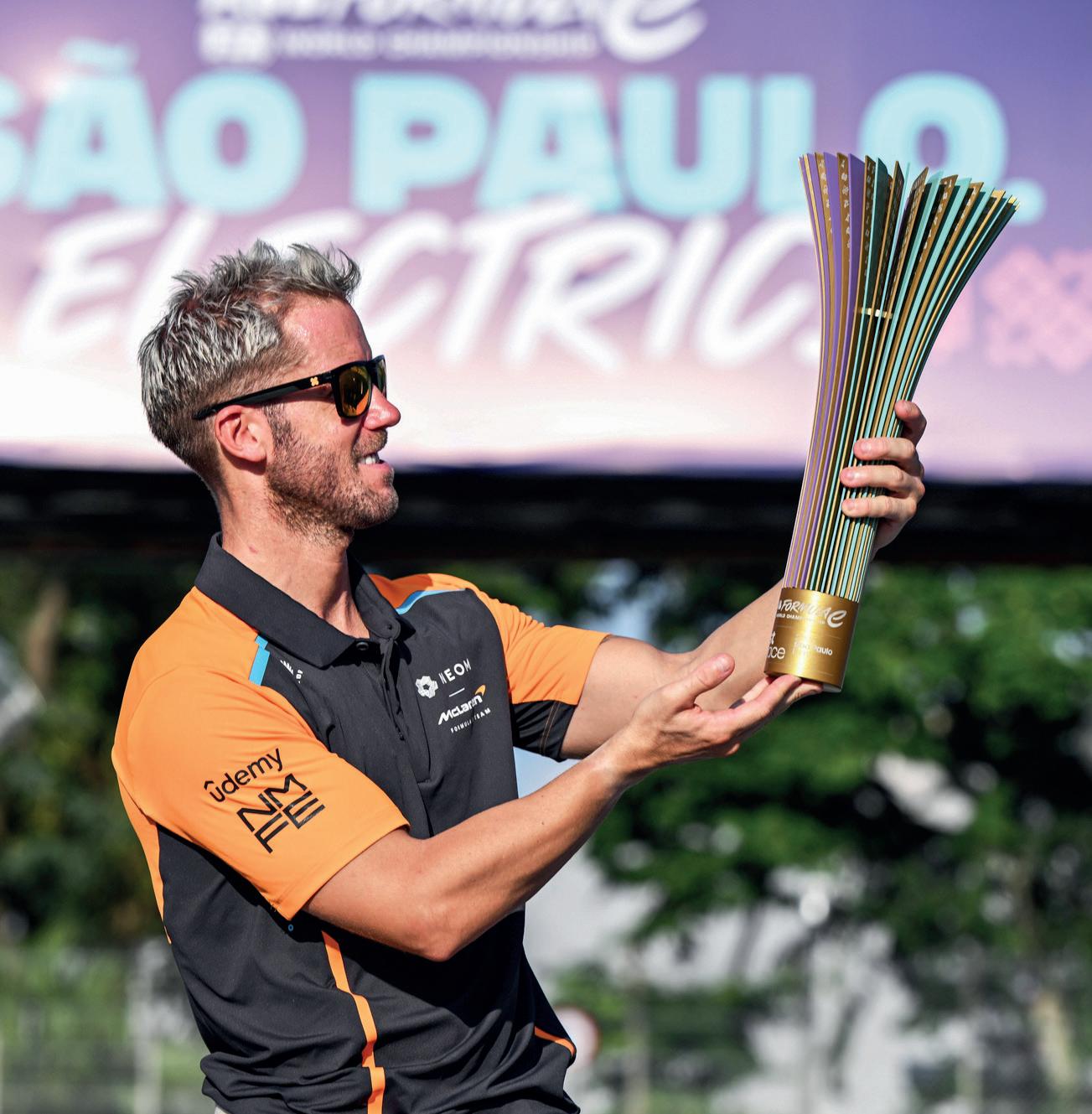

The race, which witnessed 212 competitive overtakes, unfolded as one of the most dramatic events in Formula E history, captivating tens of thousands of fans in Brazil’s bustling metropolis.
From the outset, Bird strategically manoeuvred to establish an early lead, employing attack mode to fend off formidable competitors like Pascal Wehrlein. The intense competition saw the top contenders, including the Porsches of Wehrlein and António Félix da Costa, alongside Jaguar’s Mitch Evans and Jake Dennis of Andretti Formula E, jostling for position throughout the race.
With the Anhembi Sambadrome Circuit’s challenging layout presenting an energy-critical scenario, the race dynamics were further intensified by two safety car periods, including a dramatic incident involving standings leader Nick Cassidy’s Jaguar.


As the laps dwindled, Bird and Evans emerged as frontrunners. Despite Dennis’s strategic energy reserve, his pursuit was hindered by overheating issues. In a heart-stopping climax, Bird executed a daring maneuver on Evans in the final moments of the race, clinching victory in a spectacular fashion.
Behind the leaders, Oliver Rowland capitalized on strategic opportunities, securing a podium finish ahead of Wehrlein and Dennis. Meanwhile, Brazilian home hero Lucas di Grassi faced challenges, finishing outside the top positions.
Bird’s triumph not only marked NEOM McLaren’s maiden victory in the ABB
FIA World Championship but also showcased the thrilling and unpredictable nature of Formula E racing.
In the aftermath, Bird expressed his elation, acknowledging the intense competition and the critical moment that led to his victory. Evans, gracious in defeat, commended Bird’s performance despite his own power constraints, while Rowland reflected on the challenging race dynamics and his strategic approach. With significant implications for the championship standings, the São Paulo E-Prix delivered high-octane action and unforgettable moments, reaffirming Formula E’s status as a premier motorsport series.
Current World Championship leader Nick Cassidy failed to reach the finish line in São Paulo, but is determined to bounce back ahead of the team’s 100th race in Tokyo.
Jaguar TCS Racing have stood on the podium at all four rounds this year – the only team to do so. They are also at the top of all the standings including the Drivers’ and Teams’ World Championships and the newly-announced Manufacturers’ Trophy.
New signing for Season 10, Nick Cassidy, has been a huge part of that progress, leading the team to three podiums – including a win – over the first three races of the year. It’s been a dream start for the Kiwi, but the impressive tally came to an abrupt end in Brazil.
Cassidy didn’t make it into the qualifying Duels for the first time in seven races, and lined up ninth on the starting grid. Being in the middle of the pack, and the 2.93km street circuit providing plenty of places for some argy-bargy, the Jaguar driver sustained some damage to his front wing early on in the race.
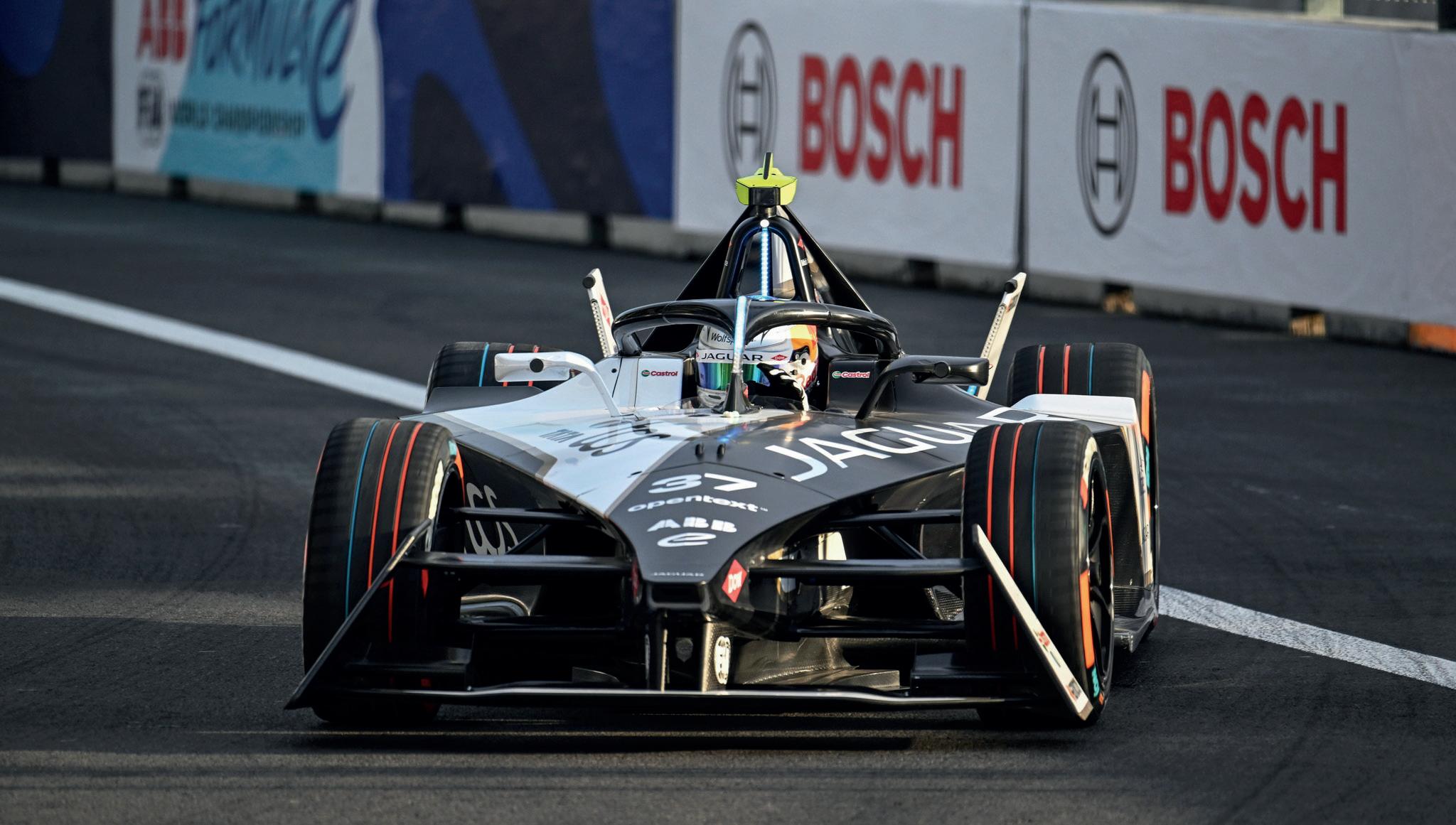


Deciding to stay out, the front wing ended up causing an accident for Cassidy which ultimately forced him to retire from the race.
“I had a really fast car in FP1, FP2 and the first run of qualifying today, but the race didn’t go quite how I wanted or expected it to,” the six-time Formula E race winner said after the chequered flag. “I had a couple of touches with the front wing and unfortunately it was too badly damaged.”
The #37 car was sixth at the time but the damage brought his race to a premature end on Lap 16 in dramatic fashion.
“I still think I was one of the fastest cars this weekend, plus, I have come off the back of four podiums in a row and I’m still leading the Drivers’ Championship standings so there’s a lot of positives to take forward to Tokyo.”
Cassidy did state after his win in Diriyah that he was “waiting for a bad day”, and it appears that it might have found its way to him. He’ll be hoping that things get better for him in Tokyo, as it’s not only the team’s 100th race in Formula E but Japan is a country Nick holds close to his heart.
The 29-year-old previously branched out into Japanese motorsport with dual driving duties in the Super Formula and Super GT championships. Driving for the legendary TOM’S racing outfit, Cassidy continued his rise in Japan taking the Super GT title in 2017, following this with Drivers’ Championship honours in the 2019 Super Formula season.
On the other side of the garage, Mitch Evans came very close to his first win of the season but with an overheating car on the final lap was overtaken by NEOM McLaren’s Sam Bird in spectacular fashion. It was Evans’ first piece of silverware this season, and pushes him up into third in the Drivers’ World Championship.
Since the death of the Punto in 2018, Fiat hasn’t had a competitor in the B segment, and the 600e is not only the brand’s re-entry into the market but also its attempt to inject a little of ‘la dolce vita’ into the market.
It describes the 600e as a Fiat 500 with 100 more things to love, including more seats, more doors, more power and more range, plus a cute Italian flag in the rear bumper.
Every image makes the 600e look like a fairly chunky mid-sized SUV but, in the metal, it’s actually a far more compact package. It’s a little longer than your average supermini but smaller than a lot of B-SUVs and around the same size as a Jeep Avenger or Vauxhall Mokka. No surprise as, under the skin, it uses the same eCMP2 platform as the Jeep and Vauxhall.
While it’s pitched as a supermini-class car, the 600e has the almost mandatory lean towards SUV design, sitting slightly taller than a hatchback, with some thin body cladding. But it retains the bubbly shape of the smaller 500e and the distinctive split headlights that straddle the bonnet gap. It’s a friendlier, less aggressive style than something like the Avenger or larger Peugeot e-2008.
Inside, the 600e is a mix of Fiat flair and standard Stellantis bits. The lower half of the dash and centre console are borrowed straight from the Avenger, so there are sensible physical controls
for the air conditioning and a huge storage area hidden by a neat folding magnetic cover. Above that, the 600e has its own style with a rounded, coloured dashboard panel that’s topped with a 10inch touchscreen and a small round instrument pod hiding a simple digital display.
There’s an emphasis on recycled and sustainable materials in the seats, mats and steering wheel and although the doors and dash are finished in a bland plastic, it feels made to last and a significant improvement on older Fiats.
Fiat says it has worked to maximise space within the 600e’s 4.17m footprint and, technically, it seats five. However, this is a small car and adults (and even taller children) will struggle to find space in the back seats. On the plus side, the boot is a useful 360 litres - twice that of the 500.
Fiat is part of the massive Stellantis group, so the 600e shares its underpinnings with everything from the Jeep Avenger to the Vauxhall Corsa.
That means it gets a 54kWh battery providing energy to a front-mounted 152bhp/192lb ft motor. Larger rivals offer more power and performance but cost more, so it’s down to how much performance you need.
Acceleration to 62mph takes 9 seconds even in ‘sport mode’, and it feels pretty sluggish. That’s with access to the full 152bhp, too, select ‘normal’ or ‘eco’ modes and the car limits the power output in the name of efficiency.
Driven carefully, the 600e should return up to 254 miles on a charge. The 600e accepts DC

charging at up to 100kW, taking it from 20-80% in 27 minutes, and a heat pump is standard to help maximise efficiency.
Fiat has softened up the 600e’s suspension compared to the Avenger and this shows in a slightly more compliant ride and a touch of body roll. Like every car based on this platform, the 600e lacks much in the way of excitement or engagement (unlike the brilliant 500e). Nonetheless, it gets on with the business of going from A to B well enough and copes well with highspeed roads while being small and light enough to feel at home in congested urban environments.

Fiat keeps things simple when it comes to trim levels and specifications. The 600e only comes in two specs - RED or La Prima and there are no options or bolt-on packages. List prices are £32,995 and £36,995 respectively but to help with its ambition to make electrification for everybody Fiat is offering private buyers a £3,000 eGrant on both trims.

Both versions come with LED lights, 11kW AC charging, a 10-inch touchscreen with wireless Android Auto and Apple CarPlay, cruise control, automatic air conditioning and keyless start. The £4,000 extra for La Prima brings 18-inch alloys, chromed badges and trim, plus tinted rear windows, a powered tailgate, 360-degree parking camera, heated massage seats finished in synthetic leather, plus sat nav, auto high beam and adaptive cruise control with lane assist. Nice
The Fiat 600e is the Italian brand’s effort to reclaim a position in the small car market where it was once a major player, but does it do enough to secure a foothold?
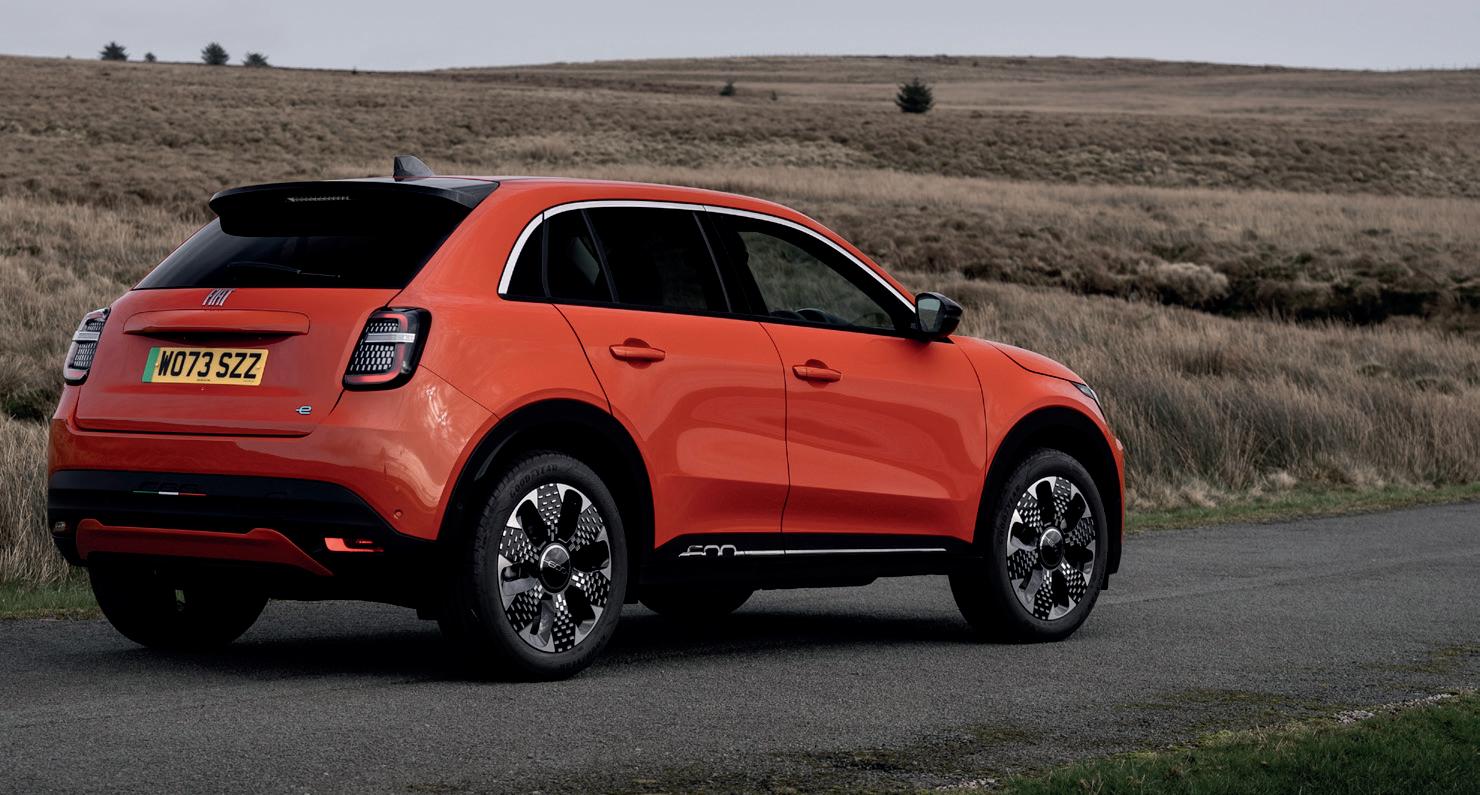
as those extras are, I’d save the cash and go for the RED, which has most of the key functions and rides better on its smaller wheels.

The 600e offers a slightly odd middle ground between supermini and small SUV. The marketing line of a “Fiat 500 with 100 more
things to love” is stretching things but the 600e is a competent companion to the 500e, offering more practicality, power and a decent usable range along with a healthy dose of style and charm. On the road there’s not a huge amount to separate it from other Stellantis models or convince you you’re living la dolce vita, but in the showrooms, that lower price makes the Fiat a sweet deal.
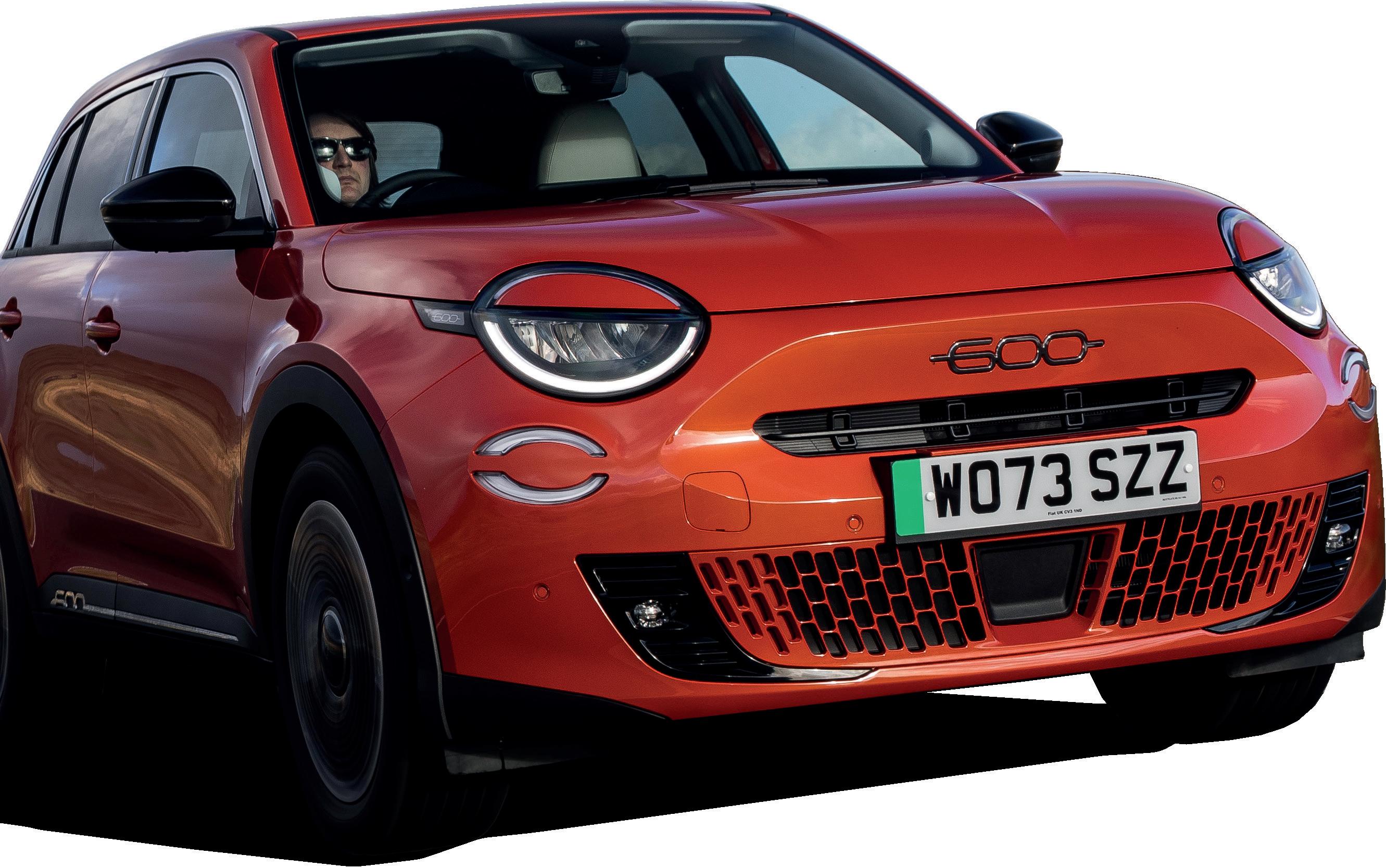
With their eco-friendly appeal and effortless cruising, electric bikes offer a unique way to explore the British countryside. From rolling hills to rugged coastlines, there’s no shortage of


breath-taking landscapes to discover. Join me on a journey through four distinct geographic areas, each offering its own charm and adventure.
Nestled in the northwestern corner of England, the Lake District boasts some of the most picturesque scenery in the country. With its shimmering lakes, towering mountains, and lush green valleys, this UNESCO World Heritage Site is a paradise for outdoor enthusiasts. Electric bikes provide the perfect means to navigate the winding roads and undulating terrain, allowing riders to effortlessly soak in the beauty of their surroundings.
From the charming town of Keswick to the tranquil shores of Lake Windermere, there’s no shortage of scenic routes to explore. Pedal-assist technology makes it easy to tackle steep inclines, while still allowing riders to enjoy a leisurely pace. Stop off at quaint villages along the way, where you can refuel with hearty local fare before continuing your adventure.
For those seeking quintessential English charm, the Cotswolds never disappoints. This idyllic region, characterized by its honey-coloured stone villages and rolling green hills, is a haven for cyclists of all abilities. Electric bikes offer a relaxed way to explore the winding lanes and hidden gems that dot the landscape.
Set off from the market town of Chipping Campden and meander through picturesque villages like Bourton-on-the-Water and Stow-on-theWold. Pause to admire historic landmarks such as Blenheim Palace or simply revel in the tranquillity of the countryside. With its gentle terrain and wealth of attractions, the Cotswolds is the perfect destination for a leisurely electric bike excursion.
For a more rugged adventure, look no further than the Scottish Highlands. This untamed wilderness boasts some of the most dramatic scenery in the UK, from mist-shrouded mountains to windswept moors. Electric bikes offer an accessible way to explore this remote landscape, allowing riders to venture off the beaten track with ease.
Embark on a journey along the North Coast 500, Scotland’s answer to America’s Route 66, and discover hidden gems at every turn. Marvel at the ancient ruins of castles perched atop craggy cliffs, or take a detour to explore pristine lochs and cascading waterfalls. With its wild beauty and sense of adventure, the Scottish Highlands is a must-visit destination for electric bike enthusiasts.
For a truly unique cycling experience, head to the Jurassic Coast in southern England. Stretching from East Devon to Dorset, this UNESCO World Heritage Site is renowned for its dramatic cliffs, fossil-rich beaches, and stunning coastal scenery. Electric bikes offer an exhilarating way to explore this geological wonderland, allowing riders to cover more ground while still enjoying the thrill of cycling along the coast.
Set off from the seaside town of Lyme Regis and follow the Jurassic Coast Path as it winds its way past towering cliffs and hidden coves. Stop off to search for fossils on the beaches of Charmouth or admire the iconic rock formations at Durdle Door.
Whether you’re a nature lover, history buff, or simply seeking adventure, the Jurassic Coast offers something for everyone.



In conclusion, exploring the British countryside on an electric bike is a truly unforgettable experience. From the tranquil beauty of the Lake District to the rugged wilderness of the Scottish Highlands, each geographic area offers its own unique charm and adventure. So why not saddle up, embrace the eco-friendly way of travel, and embark on your own electric bike adventure today? The open road awaits.

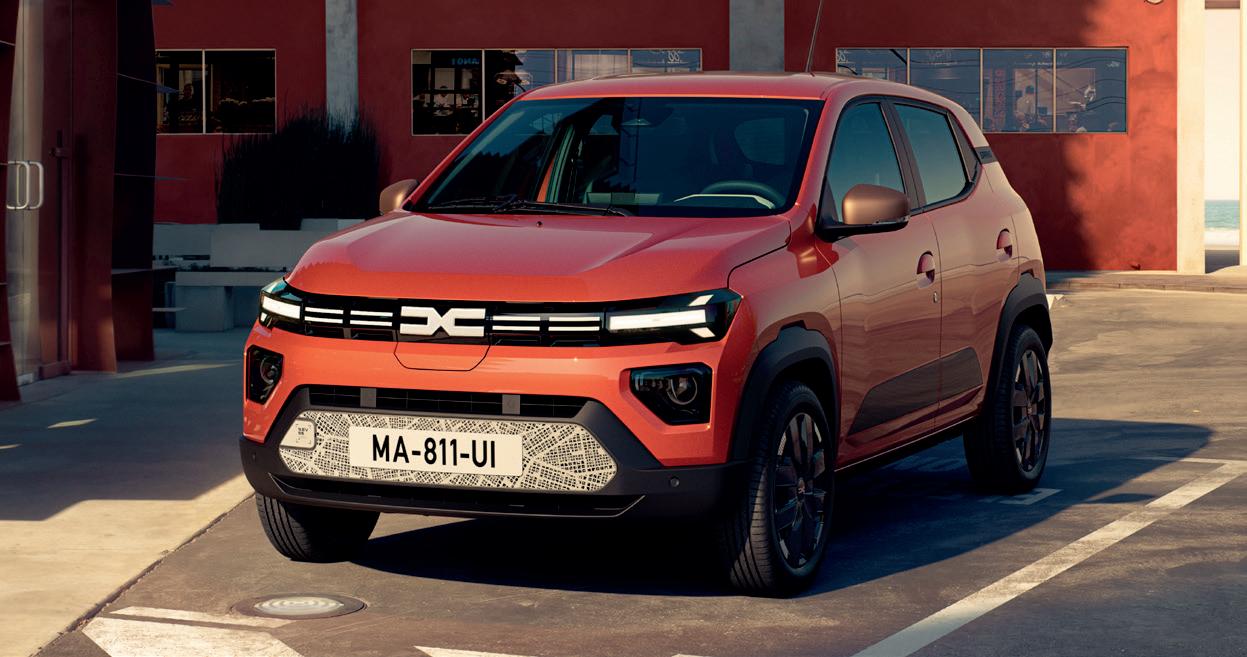
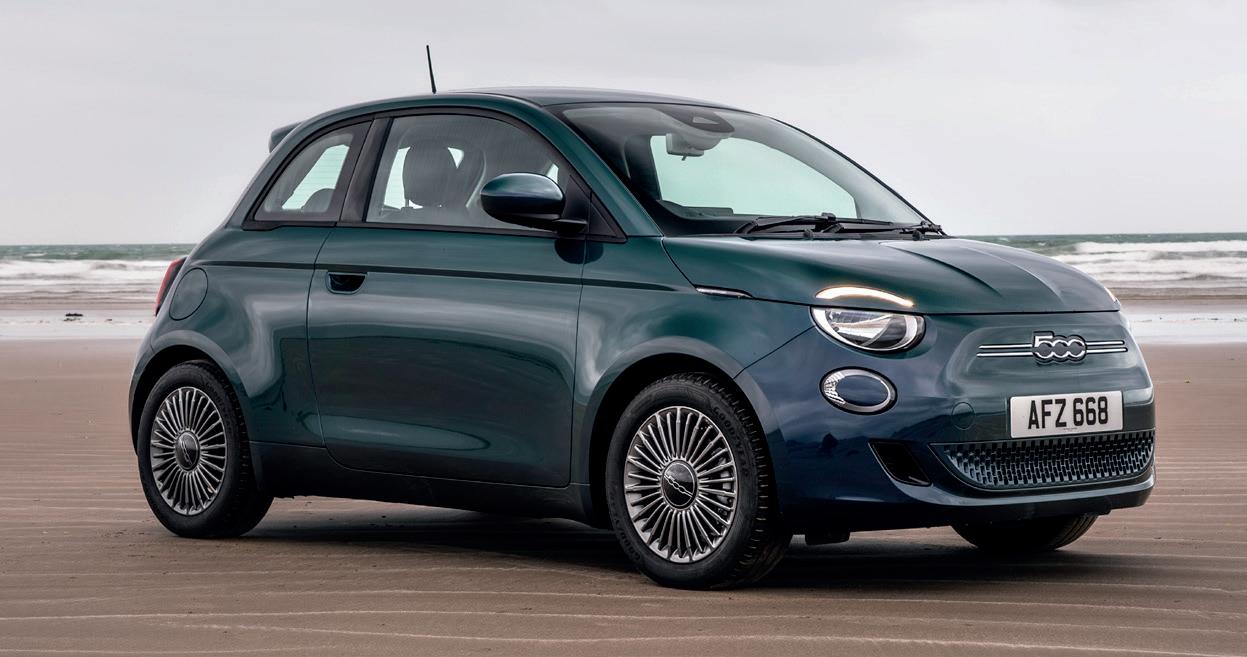


Dacia has just blown the cheap EV market wide open with the price announcement for the Spring. With a confirmed starting price of just £14,995, the Spring becomes the cheapest new electric car in the UK by more than £7,000 and among the 10 cheapest cars regardless of powertrain.
But the Spring isn’t the only affordable option out there and there are more to come. While we wait for the likes of the Renault 5, Citroen e-C3 and Fiat Panda to arrive, here are the cheapest electric cars (and one quadricycle) you can buy in the UK right now.

Technically, the Ami is a quadricycle rather than a car, but you still need a full licence to drive one in the UK, so we’re counting it on our list. Citroen’s teeny
EV - it’s 2.4m long - is purely a city vehicle thanks to its meagre 8bhp and 28mph top speed. A maximum range of 46 miles also wouldn’t get you far on the
open road. But for £99 a month, the Ami has real appeal for city dwellers looking for something more robust and practical than a bike or scooter.
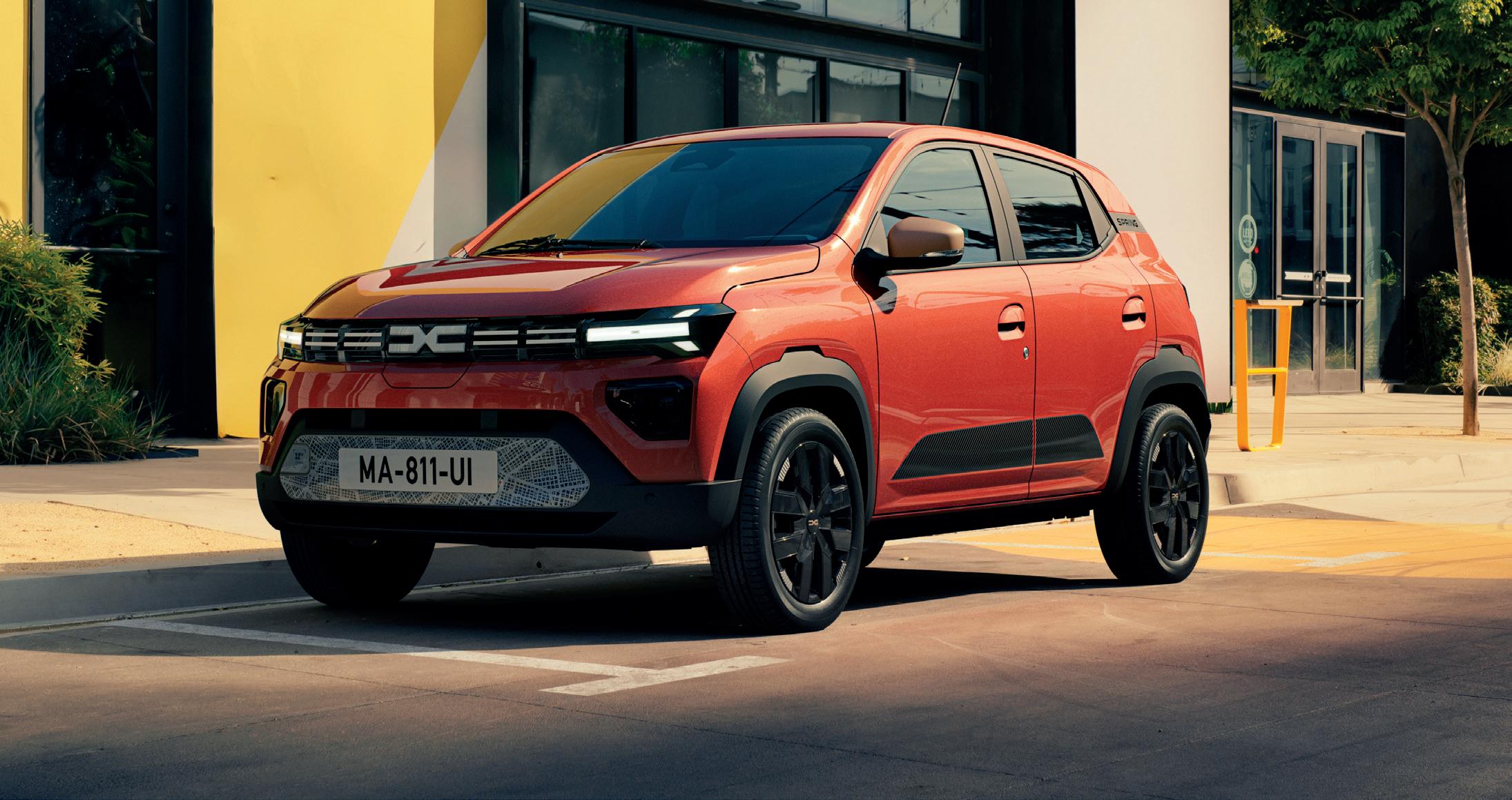
The Dacia Spring is the first ‘proper’ car on our list and the cheapest EV that’s actually suitable for use outside a city centre. That said, it’s still going to be most at home in urban
environments given its spec. The 26.8kWh battery is relatively small but should offer up to 137 miles of driving and 30kW DC charging will get it from 20% to 80% in 45 minutes.
Two motors offer either 44bhp or 64bhp and top-spec versions get a 10-inch touchscreen, wireless smartphone mirroring and two-way charging for less than £17,000.
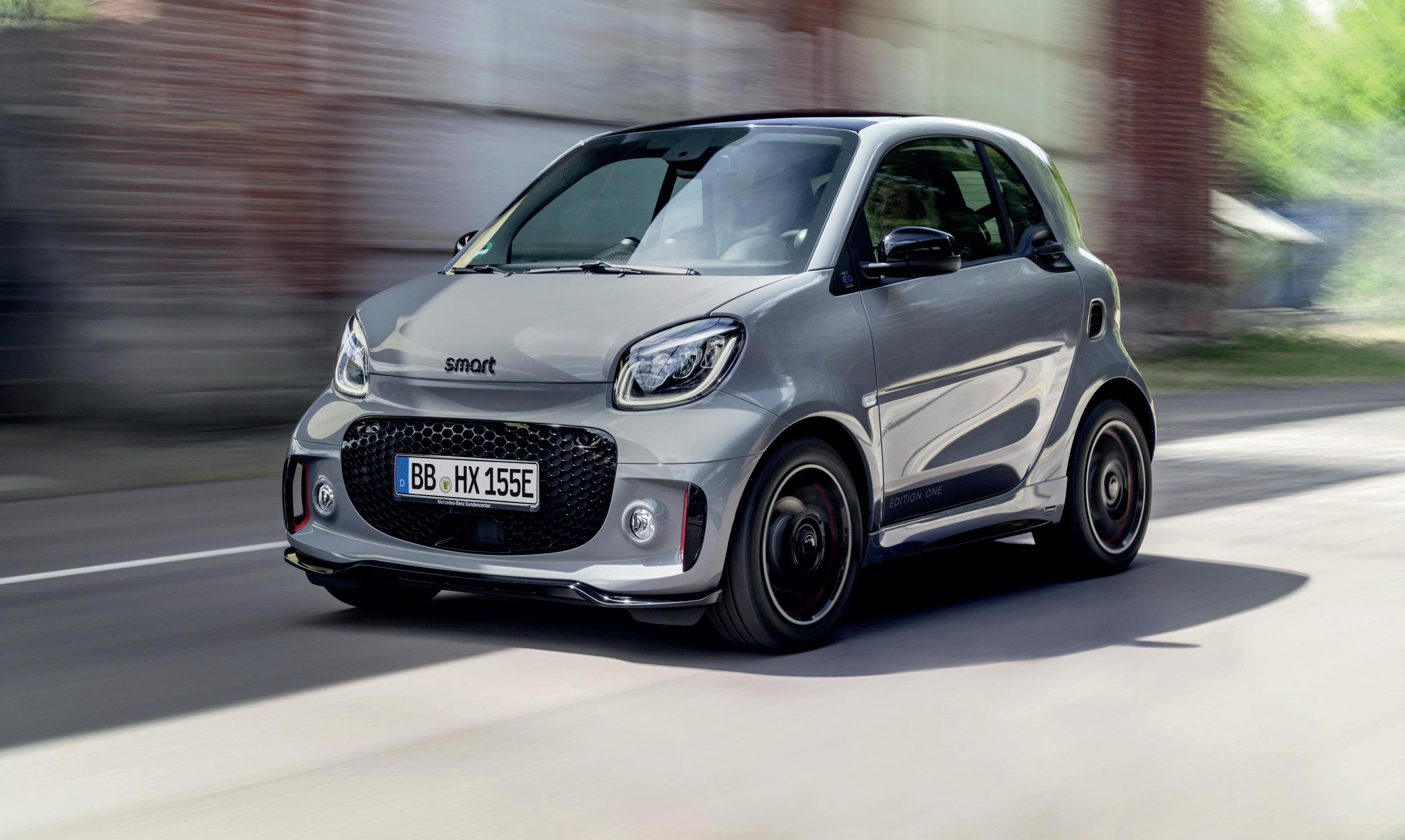
Famed

The MG4 is perhaps the greatest proof so far that EVs don’t have to cost a fortune. It’s a full-sized family hatchback capable of carrying five people and a
decent amount of luggage. The cheapest SE version comes with the smaller 51kWh battery, which returns an official 218 miles of range. The SE Long
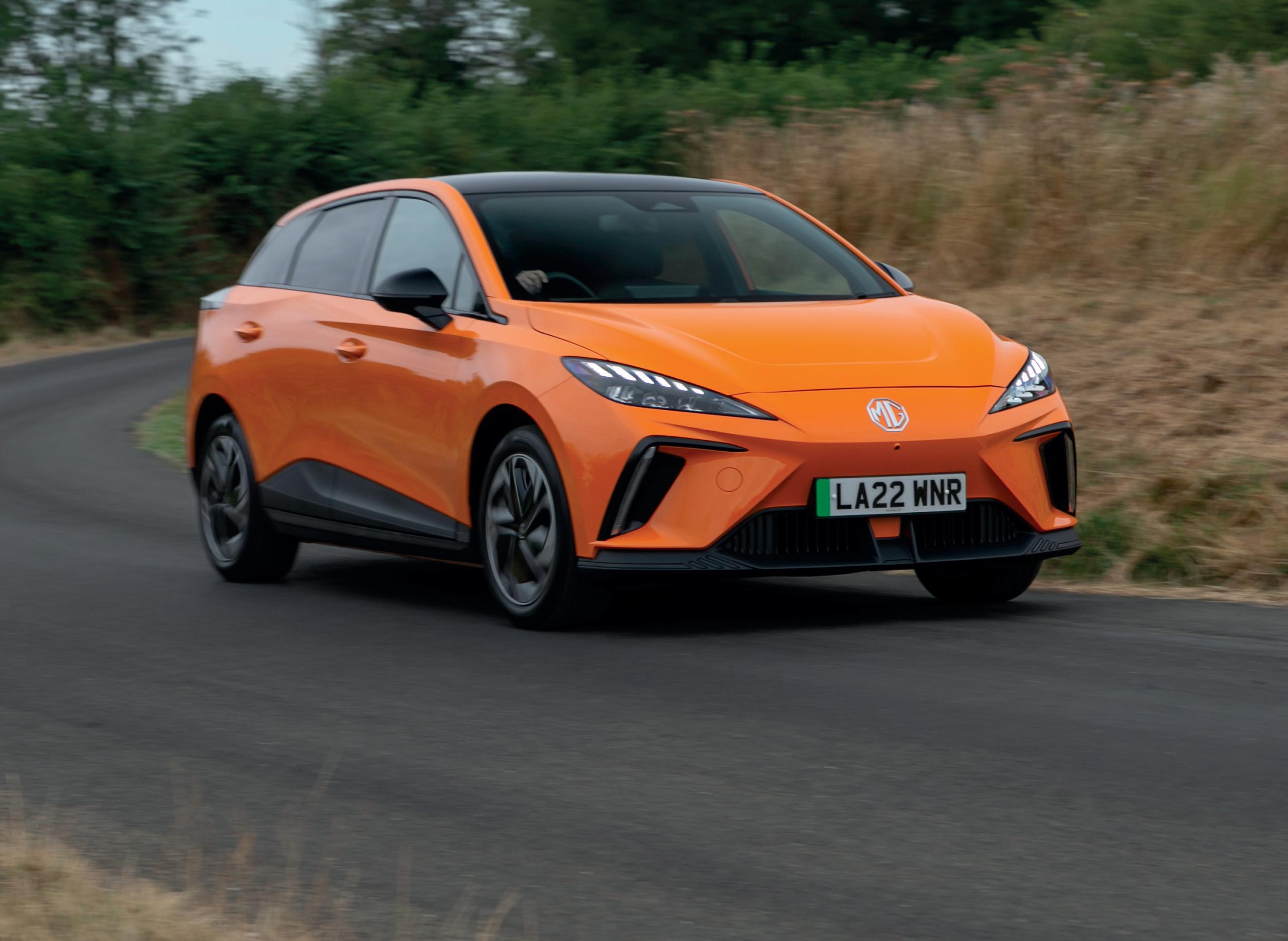
£26,995
Range bumps that up to 281 while still costing less than £30,000, and all versions come with generous equipment levels and a seven-year warranty.

Fiat’s electric reinvention of its retro-chic city car is a real success. It blends the styling cues of the earlier models with a sleeker finish and high-tech interior, and what it lacks
in space it more than makes up for in charm. Entry level versions come with a less powerful drivetrain featuring a 93bhp motor and 24kWh battery that’s good for around 118 miles of
£28,195
range. If you can find an extra £3,000, higherspec versions offer an extra 25bhp and, more importantly, a range of almost 200 miles, plus faster charging.
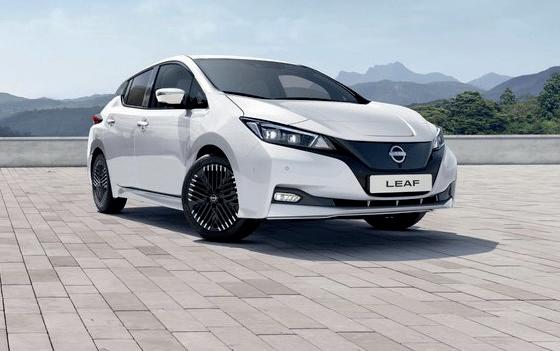
The first generation Leaf was groundbreaking in making EVs accessible and the second generation continues that trend thanks to its relatively low price. Like the MG4 and
Fiat, the entry-level Shiro models save money by using a less powerful motor and smaller battery, so you get 148bhp and a range of 168 miles, which is pretty poor by modern
£28,395
standards. However, it’s still usable if you don’t make many long journeys and there’s a reasonable level of equipment even in the cheapest versions.
 BYD DOLPHIN
BYD DOLPHIN
BYD is at the forefront of a new wave of Chinese car makers bringing their EVs to Europe and the Dolphin is its entry-level model.
It’s a compact hatchback whose bland exterior hides a more ambitious interior design, complete with rotating central touchscreen. Currently you can only buy the 201bhp version
£30,195
with a 60.4kWh battery good for 265 miles of range. Later this year we should see an even cheaper version with a smaller battery and less powerful motor.
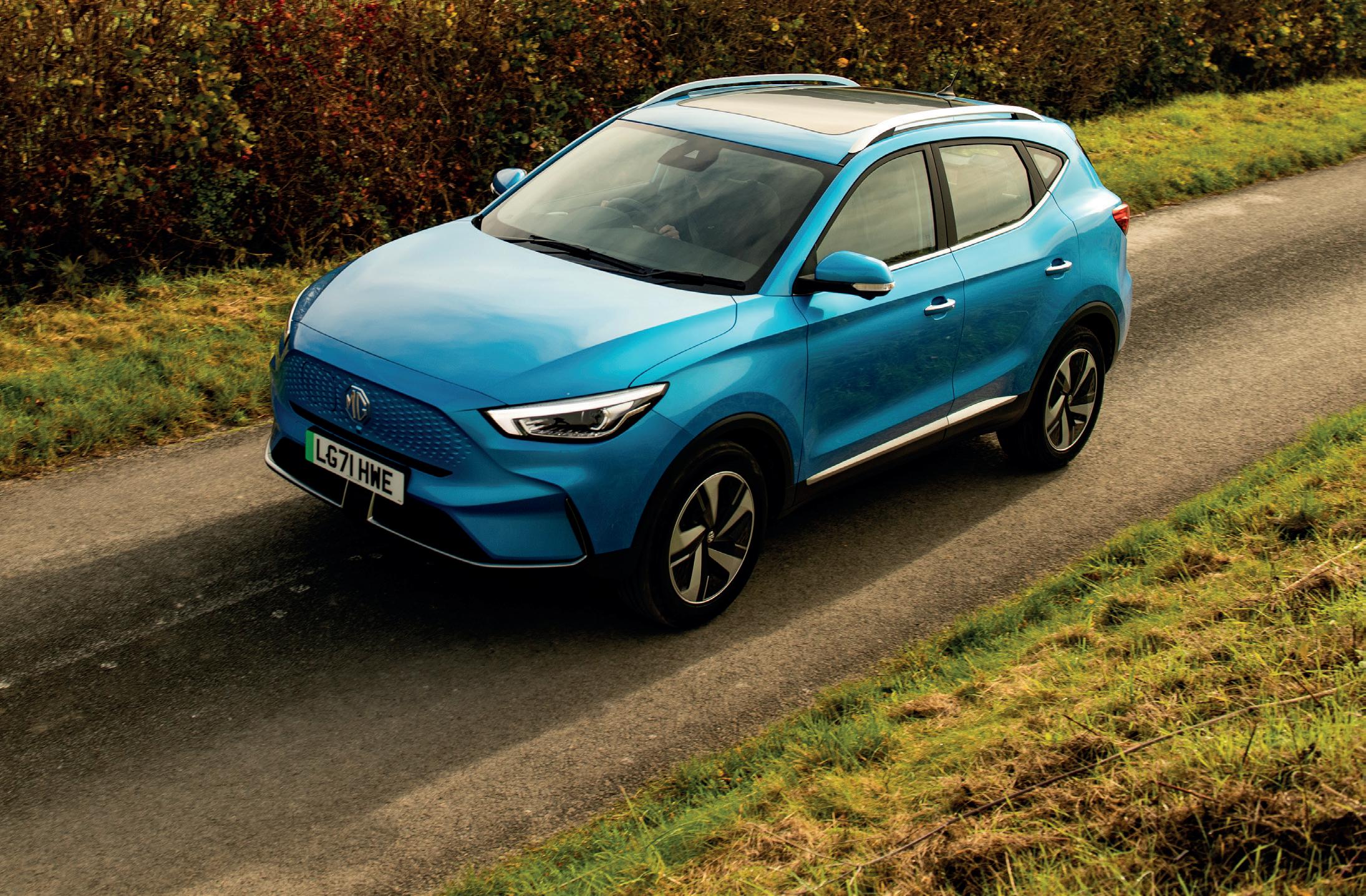
The ZS EV is the second of three MG models on this list, proving the firm’s commitment to affordable eclectic vehicles. As with the MG4, you get a lot for your money in this Kia
Niro-rivalling family SUV. Equipment levels are generous and there’s plenty of space for your average family. As with the 4, there’s a compromise between range and price. Less
£30,495
expensive versions offer 198 miles of range from a 51kW battery, while more expensive cars cover up to 273 miles. If you can afford the extra £2,500, it’s an upgrade we’d recommend.
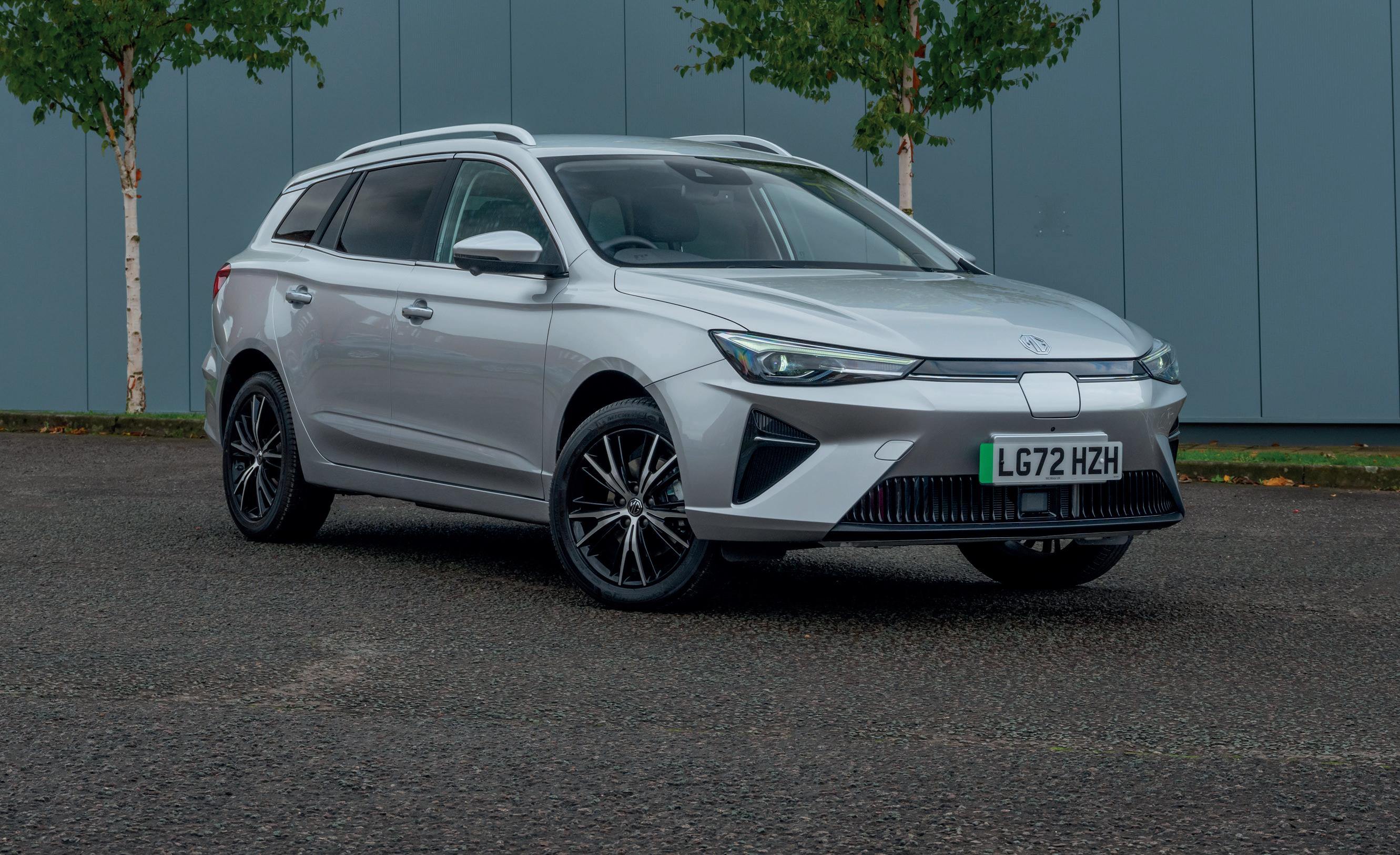
The MG5 is unusual in the world of EVs, being a rare electric estate car. Apart from that, it follows the same pattern as the MG4 and ZS. There’s space for a family of four, or five at a
good for 250 miles. The only disappointment is that, for all it’s an estate, the boot isn’t particularly big. At 479 litres, it’s just nine litres bigger than the ZS. MG5
pinch, and luxuries and technology that would add thousands to the price of some rivals. Unlike the other two, there’s only one powertrain, with a 61kWh “long range” battery
£30,995
The number of supermarkets offering EV charging has soared by 59% in the last year according to new data.
Figures from Zapmap show that 1,616 stores now offer some form of EV charging – up from 1,015 in 2022. Charger installations also increased by two thirds, meaning there are almost 3,000 devices across the country’s supermarket chains.
Stores added 1,195 new charging devices last year, bringing the total number up from 1,721 in January 2022 to 2,916 by the end of 2023. They also installed a larger proportion of faster devices, with a 145% jump in the number of rapid or ultra-rapid options.
Supermarkets have been the UK’s most popular charging locations in previous years but Zapmap’s data shows they were overtaken in 2023 by motorway services and dedicated charging hubs. Nevertheless, they remain the third busiest type of charger, with more than a third of surveyed drivers using them regularly.
Melanie Shufflebotham, COO and co-founder of Zapmap, said: “With around 3,000 charge points now in place at supermarkets across the UK, it’s really positive to see this sustained growth at such popular charging locations for EV drivers.
“Not only did the total number of supermarkets offering EV charge points rise by almost 60% last year, but we also saw significant growth in the number of those all-important rapid and ultra-rapid chargers.”
Supermarkets are now home to 10% of all the UK’s rapid or ultra-rapid devices.
The figures also reveal the supermarket chains leading the charge and those falling behind.
Tesco still dominates in raw numbers thanks to its successful partnership with Pod Point. The chain has 1,305 devices across 4,859 shops, after adding 497 new chargers last year. That means Tesco has nearly 900 more devices than its nearest EV charging rival Morrisons, which has 413 chargers at 244 different stores.
Just behind Morrions, Lidl has almost doubled its charger numbers from 186 in 2022 to 346 at 285 stores in 2023.
However, Sainsbury’s showed the biggest improvement, thanks to the launch of its ultra-rapid network Smart Charge. After installing just 53 units in 2022, the retailer nearly tripled its total device numbers in 2023 by adding 104 new chargers to its stores.
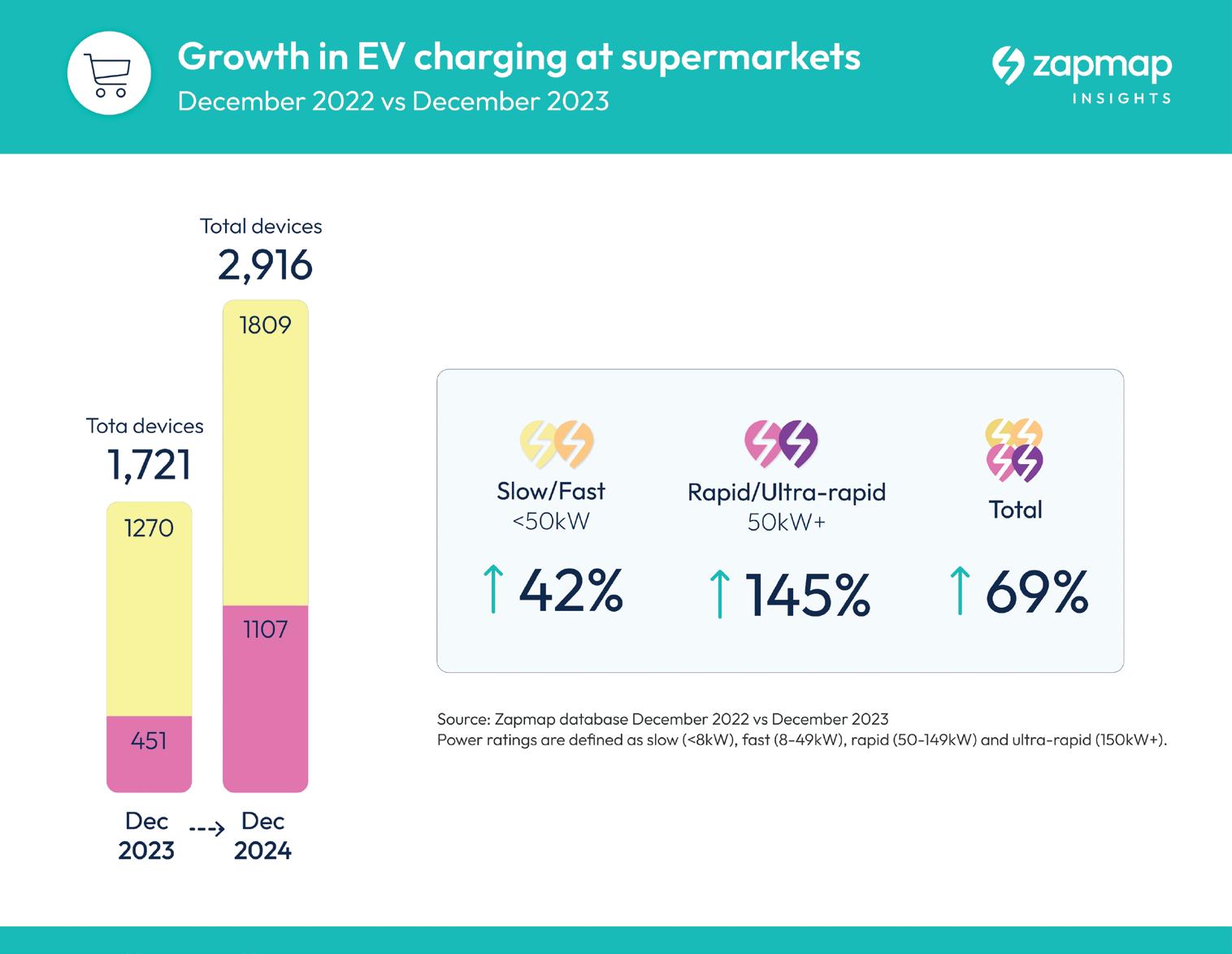
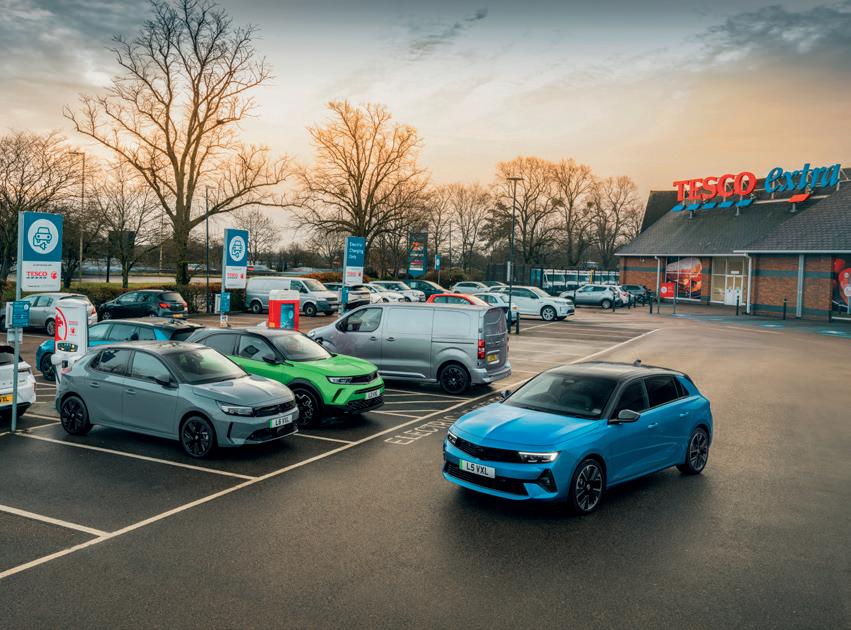
Sainsbury’s also had the highest average number of rapid chargers per location, at four units per store across the 22 shops that provided high-powered charging. In comparison, just 10% of Tesco’s devices were rapid or ultra-rapid, although it offers charging at a far greater number of locations. An impressive 99% of Morrisons devices are 50kW or above and its number of high powered chargers is set to grow rapidly after Motor Fuel Group acquired hundreds of the grocer’s forecourts in January. Lidl, too, offers a higher proportion of rapid or better charging, with 91% of devices providing 50kW or better.
Asda came bottom of the major supermarket chains after removing more than 100 chargers. The group ripped out 119 devices after its deal with bp pulse came to an end – a 72% reduction in devices compared with 2022. Just 22 Asda stores now have EV chargers, with a total of 46 devices – a mere 2% of its total estate.
The RAC has long argued that more rapid and ultra-rapid chargers are needed in varied locations nationally. RAC EV spokesperson Simon Williams said: “Concerns about the lack of public charge points are one of the biggest reasons why drivers aren’t choosing to go electric. It’s very encouraging to see supermarkets doing their best to allay these fears by ramping up EV charging facilities across a greater proportion of their estates.
“As the supermarkets currently dominate UK fuel sales, it makes sense for them to try to retain as much of that market as they can by catering to the needs of all EV drivers looking to recharge as quickly as possible.”

ASIF GHAFOOR CEO of Be.EV
The UK needs to speed up its EV infrastructure roll-out but is being held back by outdated planning rules, says Asif Ghafoor, CEO of Be.EV
We’ve just hit the milestone of one million EVs on the road and the die has been cast that electric vehicles are the way forward. It’s an exciting time for those building and maintaining EV charging networks, but it’s also an immensely challenging one. Despite the increasing popularity of electric vehicles, there are still only 55,000 public chargers and most of them are in London or other city centres. We’re in danger of falling short of the government’s target of 300,000 public chargers by 2030, because there are a number of hurdles that stand in the way.
Not only do we have an outdated National Grid and limited electricity supply, but there is also far too much bureaucracy stopping the private sector from putting chargers in the right places. This can be fixed, but it requires a change in thinking from those in charge of our EV charging policies.
The proposed Rapid Charging Fund (RCF) contains a commitment of £70 million from the government to install ultra-rapid EV charge points (that charge an average EV in less than 30 minutes) at motorways as part of a pilot scheme. While it’s admirable to see the government acknowledge we need more ultra-rapid charging, the logic behind this scheme is misguided. There is nowhere near enough space at motorway service stations or enough chargers to match current or future demand for EV chargers, and even if there was, the National Grid is not well-equipped to provide the power necessary for these charging hubs. Central government needs to be more flexible and realise that we don’t need all our ultra-rapid charg-
“
THE REALITY IS WE’RE PROVIDING AN IMPORTANT SERVICE THAT IS DIRECTLY FACILITATING THE ACHIEVEMENT OF GOVERNMENT TARGETS, WHILE ALSO COVERING THE WHOLE COST OF INSTALLATION AND MAINTENANCE OF THESE CHARGERS, SO WHY IS IT THAT THERE ARE SO MANY HOOPS WE HAVE TO
JUMP
THROUGH? ”
ing hubs to be on motorways. This sort of forecourt logic dates back to the 1950s and is in need of a refresh. Instead, we should turn our attention to the convenient en-route and easy stop-off areas surrounding our motorway junctions. There is plenty of land here that is well-connected enough to the National Grid to have EV charging, but is currently not used. Farmers and other landowners have an opportunity to make additional income by leasing this land for chargers and taking a share of the resulting revenue. Furthermore, ultra-rapid hubs on this land would give us more chargers that can serve local communities, and fewer National Grid headaches.
However, this is where we encounter another problem – the process of getting permission to use this land is painfully slow. At Be.EV, we have a huge backlog of applications for planning permission to build chargers on unused land that can support com-
munities with low levels of off-street parking, but find it incredibly difficult to get the ball rolling.
From first contact, it often takes up to 18 months to get chargers in the ground due to the administrative hurdles we have to jump through to get planning permission from landowners and local authorities. In the past we have spent money on applications only to be told that the local authority doesn’t have the resources to consider applications, or it takes so long that by the time it comes through our power applications have expired, meaning we have wasted time and capital.
The reality is we’re providing an important service that is directly facilitating the achievement of government targets, while also covering the whole cost of installation and maintenance of these chargers, so why is it that there are so many hoops we have to jump through?
We’ve seen legislation change for important infrastructure projects in the past. For example, the government recently changed laws on the installation of telecom masts to streamline their roll-out – for any masts under 15m tall, local authorities must approve their construction within 56 days unless there is a good reason to reject it. The government has clearly made the rollout of a public EV charging infrastructure a priority, so it’s confusing that the process for EV charging hasn’t been streamlined in a similar way.
If the government enacts similar changes, we can form more public-private partnerships to help achieve their green targets and bring the benefits of EV charging to communities across the country.
This is Jasmin. She’s one of many business owners who already use a smart meter to feel more in control of their budgeting, because smart meters help you track your energy use and costs over time.
So like Jasmin, you can spend less time guessing and instead know how much you’re spending on your energy bills.
Search ‘get a smart meter’ today.






Labour is unveiling plans to invest in building floating wind farms off Britain’s coast as part of its strategy to enhance the country’s energy security and reduce reliance on foreign energy sources.
Sir Keir Starmer, the leader of the Labour Party, will announce the creation of a state-owned firm called Great British Energy, which will have a budget of £8.3 billion to fund the construction of these wind farms.
The aim is to cut energy bills and create jobs while accelerating the decarbonization of the UK’s energy sector. Labour has set a target to achieve net-zero carbon emissions by 2030, while the Conservatives have set a target of 2035 for net zero energy supply.
Labour’s plan involves leveraging public investment to attract private investment for the development of floating offshore wind farms. Sir Keir Starmer emphasizes the need for national energy security, particularly in light of geopolitical tensions affecting global energy markets.
However, the Conservatives have criticized Labour’s plan as “unfunded” and warn that it could lead to higher taxes. Energy Secretary Claire Coutinho argues that Labour lacks a concrete plan to protect energy security and questions how they will finance their ambitious proposals.
Labour’s shift towards renewable energy includes a commitment to veto any new oil and gas licenses in UK waters if elected. This stance contrasts with the Conservative government’s plan to continue granting permits for fossil fuel extraction, with a target of achieving net zero energy supplies by 2035.
Floating wind farms represent an innovative approach to renewable energy generation, allowing turbines to be positioned further out at sea where wind speeds are higher. Labour sees this technology as a key component of its strategy to transition to clean energy and reduce carbon emissions.
Overall, Labour’s proposal reflects its broader agenda to tackle climate change, create green jobs, and enhance energy security through investments in renewable energy infrastructure.


Chinese electric vehicle (EV) battery manufacturer EVE Energy is reportedly in discussions to invest over £1 billion in constructing a massive new gigafactory on the outskirts of Coventry, UK. The proposed factory, spanning 5.7 million square feet, would be a key component of the planned UK Centre for Electrification in the West Midlands region.
The investment could lead to the creation of up to 6,000 jobs and would involve collaboration with local councils and Coventry airport, where the facility is set to be located. EVE Energy is considering an initial investment of £1.2 billion for the project, with potential expansion in subsequent phases. This development follows Tata Group’s commitment last year to invest £4 billion in building an electric car battery gigafactory in Somerset, UK, which is expected to generate 4,000 new jobs. The West Midlands, home to various car manufacturing facilities and the UK’s largest battery research center, is positioning itself as a hub for EV battery production and innovation.
The Coventry gigafactory project could attract additional private funding totaling up to £2 billion, contingent on securing substantial subsidies from the UK government. Discussions with potential investors, including leading Asian battery manufacturers, have been ongoing since October 2023.
While the project’s spokesperson confirmed discussions with global battery manufacturers, specific details remain confidential. The government reiterated its commitment to supporting automotive manufacturing in the UK’s transition to electric vehicles, emphasizing responsible use of taxpayer money.
They are accused of overcharging consumers by £100 million, with claims suggesting they artificially inflated compensation payments received for shutting down turbines on windy days when grid capacity wasn’t needed.
Analysts at the Renewable Energy Foundation (REF) provided evidence to Ofgem, indicating that wind farm companies might be inflating the price of “virtual energy” they never actually generated.
Ofgem has confirmed receiving the claims and commenced an investigation to determine if any rules were breached.

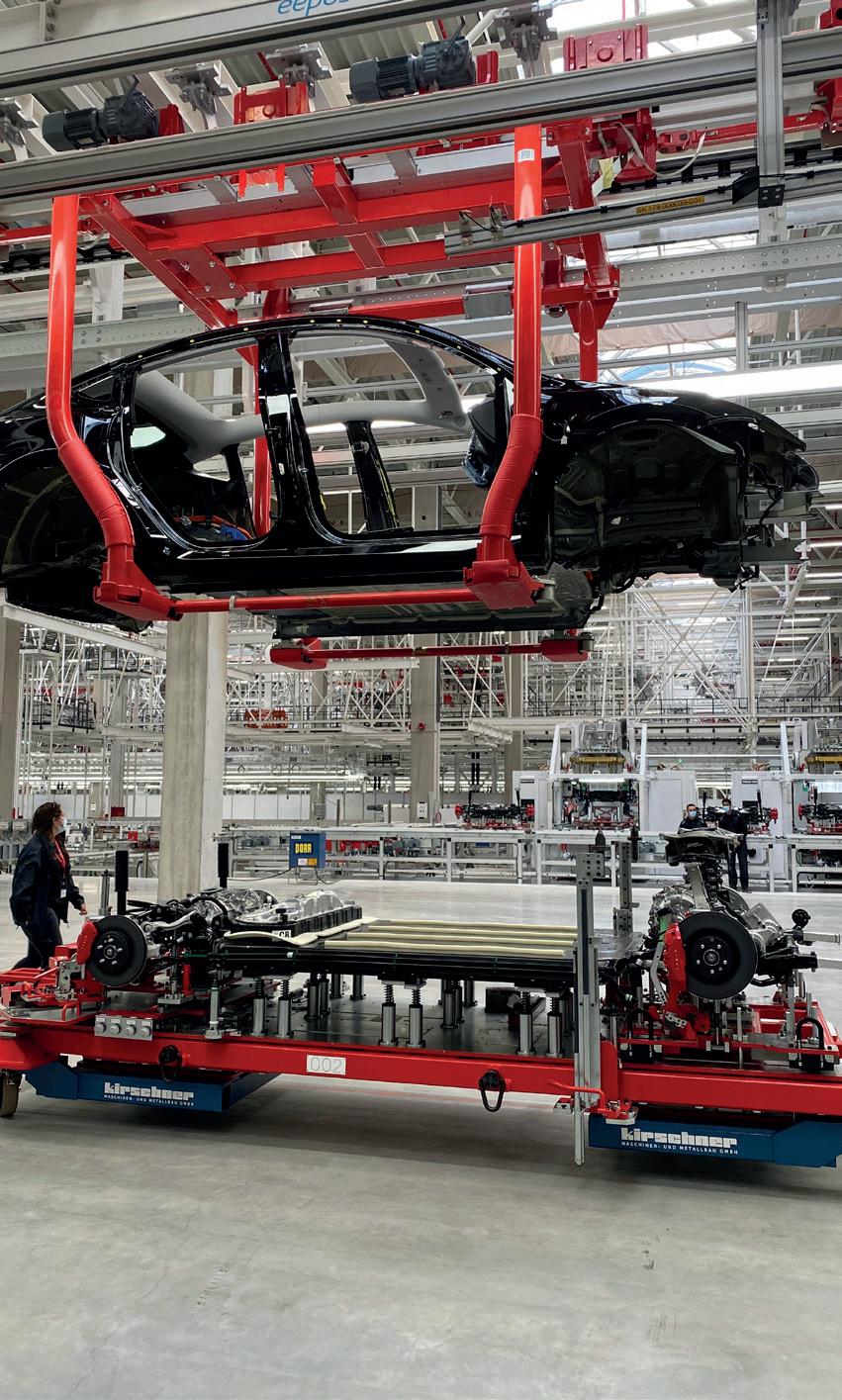
John Constable, director of REF, highlighted the potential impact on consumers, estimating the added cost to be £100 million in 2023 alone.
Mr Constable said: “Our evidence suggests that multiple wind farm operators have been charging over the odds to reduce their output on windy days, generating no energy but costing consumers a fortune.”
REF alleges that wind farm operators overcharged for constraint payments, which are payments given to generators for switching off assets when the national grid risks overload.
An Ofgem spokesperson said: “We do not agree with the Renewable Energy Foundation’s claim that wind farms can ‘name their price’ for turning down generation.
“We already have a robust set of rules in place which explicitly exist to prevent generators from abusing the energy market in such circumstances. We have required several generators to make multi-million-pound payments in the last year alone where those rules have been breached.
“We’ll consider all the facts and if evidence of a breach of market rules is found we will not hesitate to act. We are also currently consulting on whether any changes are required to the licensing rules in this area.”

Renewable energy sources, including wind, hydro and solar, have generated more power than gas stations in the UK during the winter of 2023/24.

The work by the Bradford Diocesan Academies Data from the Energy and Climate Intelligence Unit’s (ECIU) Power Tracker indicates that renewable generation reached approximately 55TWh (terawatt hours), surpassing the estimated 45TWh generated by gas.
Jess Ralston, Head of Energy at ECIU, emphasised the importance of transitioning to renewables to mitigate the risks associated with importing gas from abroad.
Jess Ralston, Head of Energy at ECIU, said: “With or without new licenses, the North Sea will continue its inevitable decline so we’ll need to import ever greater quantities of gas from abroad unless we cut our demand by rolling out more renewables.
“The price of gas is set by international markets so the choice for the UK is stark. Boost British renewables and achieve clean power or import more gas at a price we can’t control.
“Despite the good news on renewables now, if you look more broadly we’re heading backwards on energy independence. The government fumbled its last renewables auction securing no new offshore wind farms.
“It’s also set to agree only a limited number in the next auction round because of Treasury’s odd rules. It has also just delayed the rollout of heat pumps which can run on electricity from British offshore wind, rather than boilers that will increasingly have to run on foreign gas.”
A £200m green energy development in East Yorkshire has been approved by Hull City Council.
The site at the former Hedon Aerodrome could create up to 4,500 jobs, the authority claimed.
The authority’s cabinet approved the Yorkshire Energy Park scheme which will be part of the planned Humber Freeport.
It will house battery storage facilities and also host research and development into sustainable energy as well as sports facilities.
Councillor Paul Drake-Davis, the council’s portfolio holder for regeneration, said: “This decision will provide significant opportunities at the Yorkshire Energy Park.
“It will help cement Hull’s status as a leader in renewable energy, whilst also creating largescale local job opportunities in the area.”


Much was made at the time of BP, Shell and Suncor all scaling back on their original climate targets last year as their profits hit record highs. BP’s profits alone more than doubled to $27.7bn (£23bn) in 2022, as energy prices soared globally due to record temperatures and the obvious geopolitical tensions. For many, these scale-backs were disappointing given the progress we have been making towards decarbonisation. Yet, these decisions were influenced by a combination of factors. A perfect climate storm some might say.
A global pandemic, a war in Europe, and double-digit inflation were not foreseen when these companies originally set their climate targets and laid out their strategies based upon them. Even the most optimistic observers at the time must have understood that some adjustments were inevitable. After all, in times of economic uncertainty, there typically follows a prioritisation of the short-term over the long-term goals. What is certain, though, is that investment in oil and gas is going up, not down.
What we have seen happen with energy prices over the past 18 months has gone to re-invigorate the belief that there is still a long-term need for oil and gas, and most definitely a short-term opportunity. Given that it is still the core business of many in the sector, they are simply doing what any business is expected to do when demand for its product goes up.
Unfortunately, the impact of all this will be that achieving net zero sooner rather than later has lowered in priority. For now, at least. The trajectory to net zero for oil and gas companies will now have to be much steeper between 2030 and 2050. Making it far more challenging to reach the goals they previously set themselves.
Scaling back on climate targets will, of course, impact cumulative global emissions, making it far more difficult to meet the Paris Agreement that was adopted by 196 Parties at the UN Climate Change Conference (COP21) in 2015 to aim to “limit the temperature increase to 1.5°C above pre-industrial levels.” There will be a knock-on impact for not only those that produce oil and gas products but those that use them in their supply chain. If there are fewer low carbon energy alternatives,
they will find it more challenging to decarbonise their business in line with their targets.
Of course, they need to be careful. A lack of commitment towards sustainability, could potentially impact investor confidence and their ability to attract capital for future green investments. It could also do untold damage to a company’s brand. Consumers are increasingly looking for the businesses they buy from to have traceable – and ethical – supply chains. So much so, that a recent study showed that those organisations that were seen as environmental, social, and governance (ESG) leaders were 43% more likely to outperform similar organisation in terms of profitability. This has made having strong environmental credentials no longer just a ‘nice to have’ for businesses, but an imperative.
Energy companies need to strike a balance between ambitious climate targets and realistic action plans that are financially viable. It is important to remember that scaling back on climate targets does not indicate a complete abandonment of sustainability efforts. It may simply reflect a more pragmatic approach to ensure a successful and orderly transition. But it is up to those companies to convince their investors, employees, consumers, and other stakeholders that they can be counted on to play their part in achieving net zero.
Considering how central the energy sector is to global commerce, the
impact of their reduced ambition will inevitably be that emissions will now stay higher for longer. Not only from the direct emissions attributed to these companies, but from the continued rate of consumption of their products. Wider global decarbonisation goals are fully dependent on the energy sector. After all, sustainability goals being set by organisations across all industry sectors are reliant on their ability to be able to decarbonise their energy consumption. That goal is put at risk when the energy sector itself dials back their ambitions to transition away from fossil fuels. However, it is not all bad. There are still many energy companies fully committed to net zero who are developing renewable energy and low carbon technology. They could be the real winners here as the scaling back of others presents an opportunity for them to move even faster with less competition.


Making small changes in your home can have a significant impact not only on your utility bills but also on the environment. In this guide, we’ll explore practical and achievable steps you can take to save energy within the confines of your own home.
Older appliances are notorious energy guzzlers. Consider replacing them with modern, energyefficient models bearing the Energy Star label. These appliances consume significantly less electricity while offering the same, if not better, performance. From refrigerators to washing machines, investing in energy-efficient appliances will yield long-term savings on your energy bills.
Heating and cooling account for a substantial portion of household energy consumption. Installing a programmable thermostat allows you to regulate temperature settings according to your schedule. Lowering the thermostat by just a few degrees in winter and raising it in summer can result in substantial energy savings without compromising comfort.
Drafts around doors and windows can lead to substantial heat loss, forcing your heating system to work harder. Invest in weather stripping and caulking to seal these leaks, thereby reducing energy waste and maintaining a consistent indoor temperature.
Switching to energy-efficient LED bulbs can dramatically reduce electricity consumption for lighting. Not only do LED bulbs consume less energy, but they also have a longer lifespan, reducing the frequency of replacements. Additionally, make it a habit to turn off lights when leaving a room to further conserve energy.
Many electronic devices continue to draw power even when turned off, contributing to what’s known as “phantom energy” or standby power

Together, let’s for the
benefit
consumption. Unplug chargers, appliances, and electronics when not in use or utilize power strips with on/off switches to easily cut off power to multiple devices simultaneously.
Proper insulation is crucial for maintaining a comfortable indoor environment while minimizing energy usage. Insulate attics, walls, and floors to prevent heat loss in winter and keep cool air in during summer. Adequate insulation not only reduces the strain on heating and cooling systems but also enhances overall energy efficiency.
Reducing water consumption also translates to energy savings since energy is required to heat water for various household uses. Install low-flow showerheads and faucets to minimize water usage without sacrificing water pressure. Fix leaks promptly to prevent unnecessary water waste.
Consider installing solar panels to harness renewable energy from the sun. While the initial

investment may seem daunting, solar panels can significantly reduce or even eliminate your reliance on traditional grid electricity over time, leading to substantial long-term savings and a reduced carbon footprint.
When cooking, use lids on pots and pans to retain heat and cook food more efficiently. Opt for energy-efficient appliances such as induction cooktops, which utilize electromagnetic energy to heat cookware directly, minimizing wasted heat and energy.
Saving energy is a collective effort that requires the participation of every household member. Educate your family about the importance of energy conservation and involve them in implementing energy-saving practices. Encourage everyone to adopt simple habits like turning off lights and unplugging devices when not in use.
Making small changes in your home can lead to significant energy savings and contribute to a more sustainable future. By implementing the tips outlined in this guide, you can not only reduce your carbon footprint but also save money on your utility bills. Together, let’s embrace a more energy-efficient lifestyle for the benefit of both our wallets and the planet.
embrace a more energy-efficient lifestyle benefit of both our wallets and the planet.


As the summer months approach, homeowners everywhere are gearing up to make the most of the warmer weather. From outdoor entertaining to energy efficiency, there are numerous ways to prepare your home for the season ahead. Here are some essential tips to help you electrify your summer and ensure a seamless transition into the sun-soaked days:
Before the heat sets in, it’s crucial to inspect and maintain your air conditioning system. Clean or replace filters, check for leaks, and ensure that all components are functioning properly. Consider scheduling a professional tune-up to maximize efficiency and prevent breakdowns during the peak of summer.
If you’re still using outdated appliances, now is the perfect time to upgrade to more energy-efficient models. Look for appliances with ENERGY STAR certification, which can significantly reduce your energy consumption and utility bills over time. From refrigerators to washing machines, investing in energyefficient appliances is a smart choice for long-term savings and environmental sustainability.
Proper insulation and sealing are essential for maintaining a comfortable indoor temperature and reducing energy waste. Check for drafts around windows, doors, and electrical outlets, and seal any gaps or cracks with weatherstripping or caulking. Additionally, consider adding insulation to your attic, walls, and floors to improve energy efficiency and keep your home cool in the summer heat.
Smart thermostats offer precise temperature control and can help you optimize your energy usage throughout the summer months. Program your thermostat to adjust automatically based on your schedule and preferences, and take advantage of features like remote access and energy usage tracking to monitor and manage your cooling costs effectively.
Make the most of the warmer weather by creating inviting outdoor living spaces where you can relax and entertain. Whether it’s a cozy patio, a deck with comfortable seating, or a lush garden retreat, investing in outdoor amenities can enhance your summer experience and extend your living space beyond the confines of your home.
Solar energy is a renewable and sustainable alternative to traditional power sources, making it an excellent option for homeowners looking to reduce their carbon footprint and lower their energy bills. Consider installing solar panels on your roof or property to generate clean, renewable energy and take advantage of available incentives and rebates to offset the initial cost.
As temperatures rise, so does water usage for activities like gardening, landscaping, and outdoor recreation. To conserve water and reduce your environmental impact, consider installing low-flow fixtures, collecting rainwater for irrigation, and incorporating droughttolerant plants into your landscaping. Additionally, be mindful of water usage habits and avoid unnecessary waste whenever possible.
Summer often brings severe weather events like thunderstorms, hurricanes, and heatwaves, which can pose risks to your home and safety. Take proactive measures to prepare for storm season by trimming trees, securing outdoor furniture and equipment, and investing in storm shutters or protective coverings for windows and doors. Additionally, consider installing a backup generator to ensure uninterrupted power supply during emergencies.


By following these essential tips, homeowners can prepare their homes for the summer season and enjoy increased comfort, energy efficiency, and sustainability. From optimizing cooling systems to embracing renewable energy solutions, there are numerous ways to electrify your summer and make the most of the warmer months ahead.


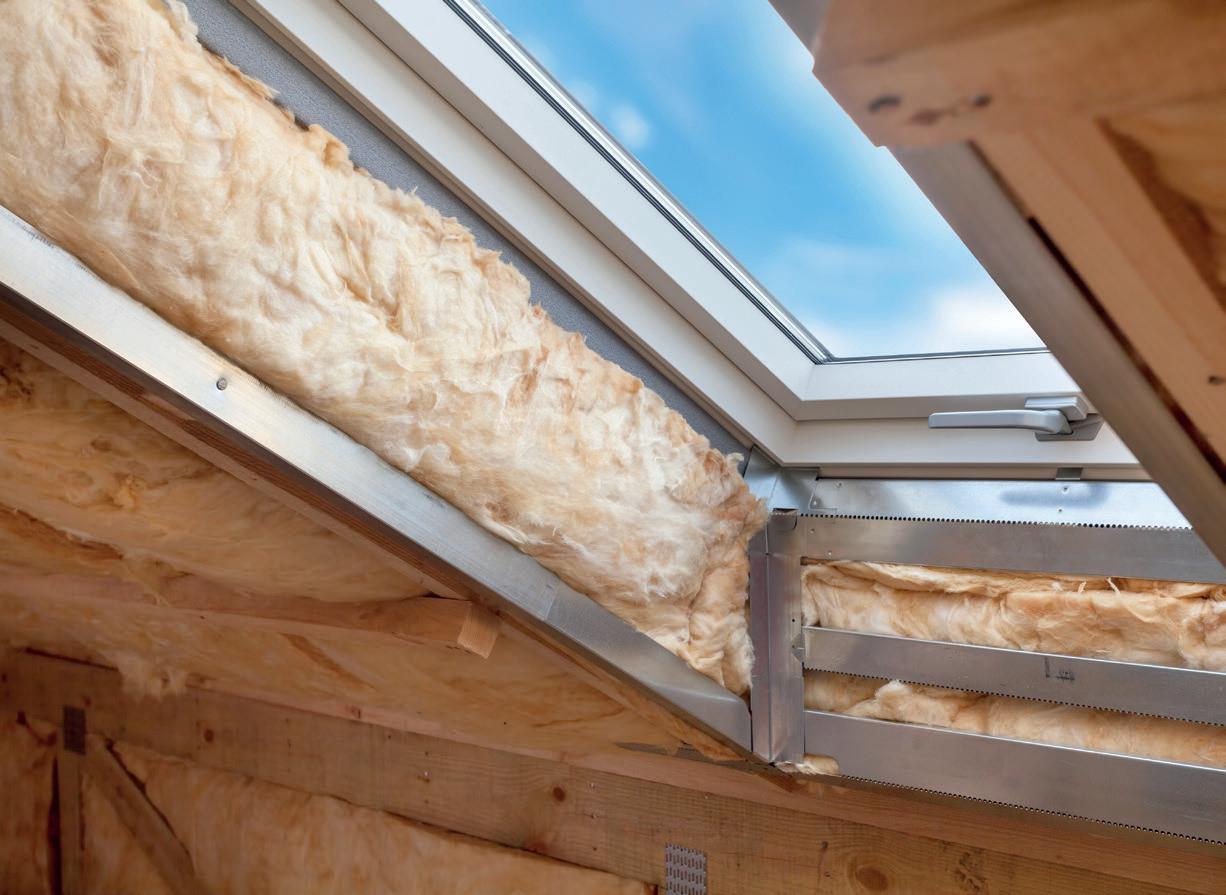

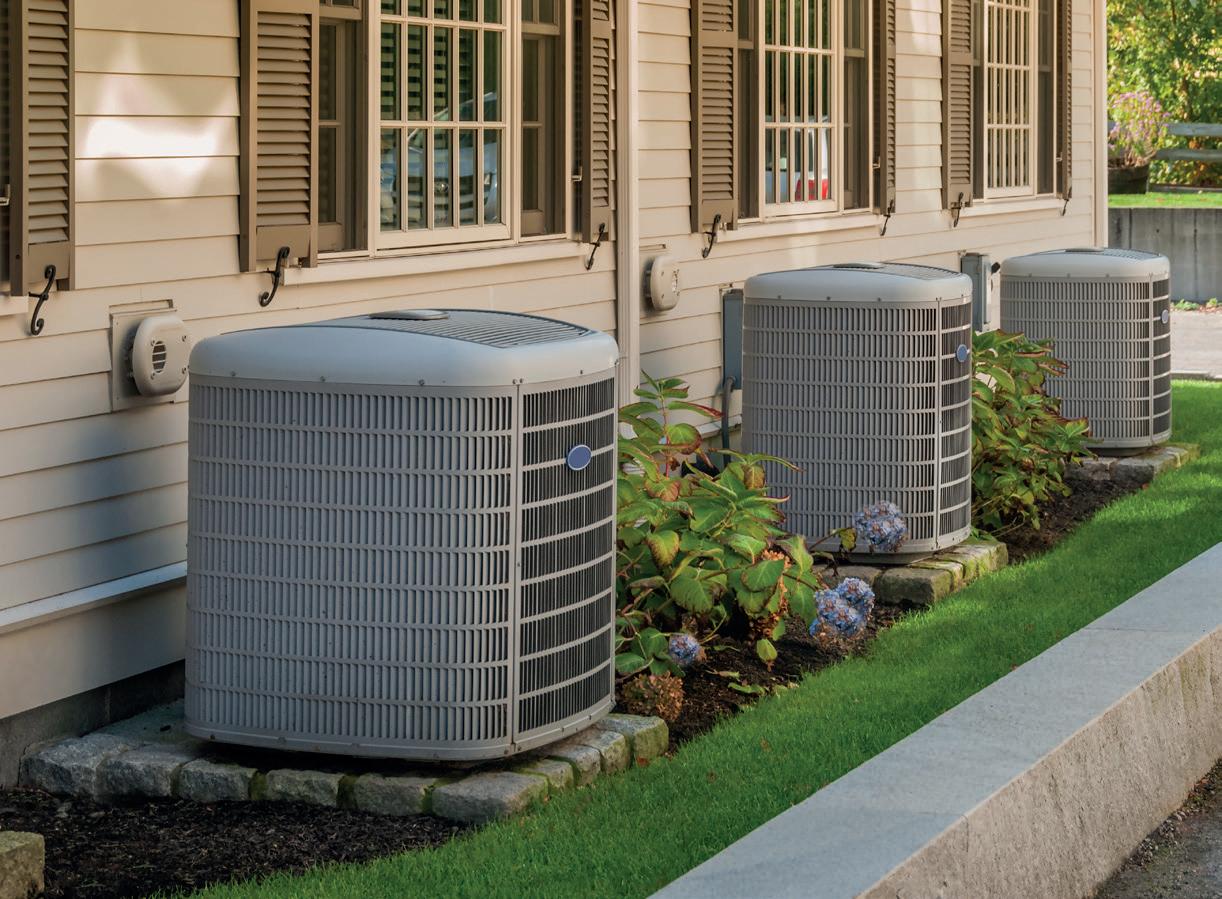
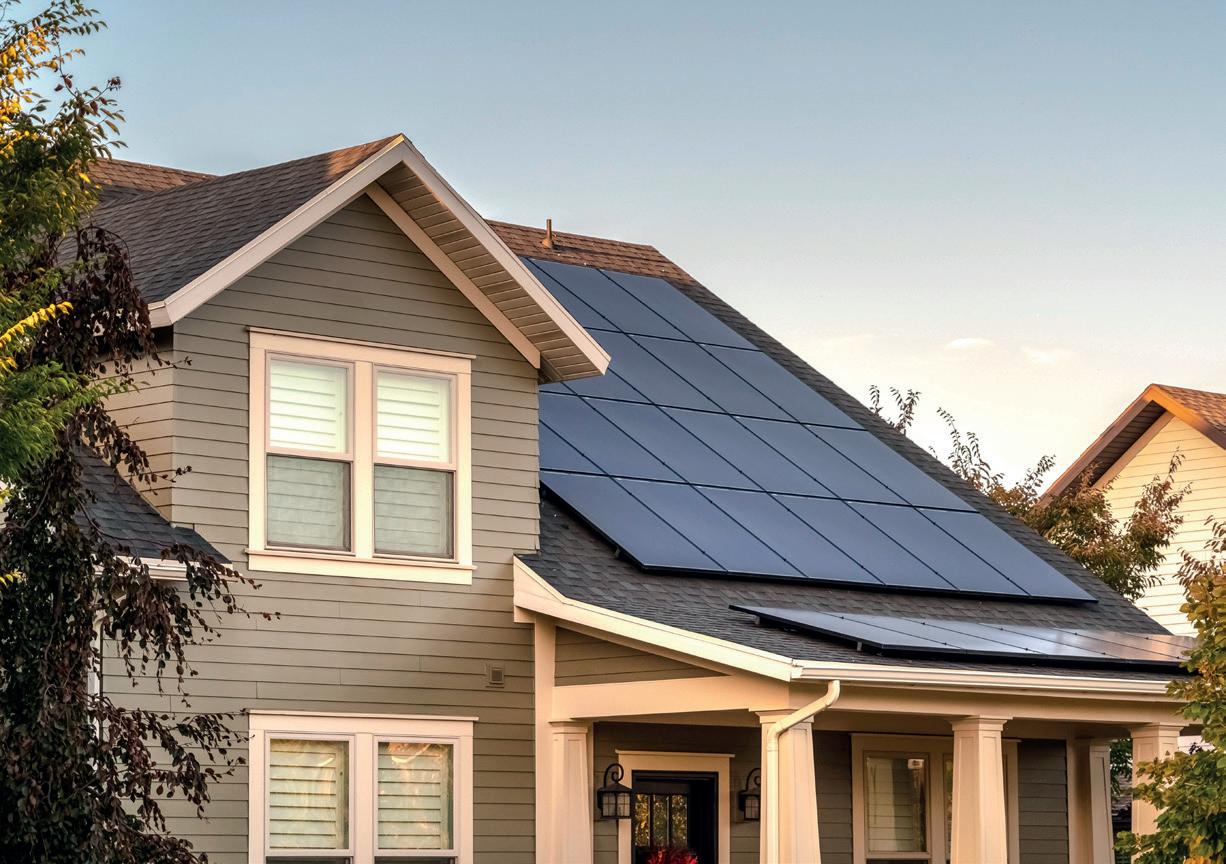

With prices falling, payback shortening and product choice booming, there’s never been a better time to invest in renewables. In this article, myenergi co-founder Jordan Brompton dispels common green energy myths and explains the rapid acceleration of microgeneration.
Last year was a record-breaker for domestic renewable energy installations in the UK, according to data from the Microgeneration Certification Scheme. More low-carbon energy and heating installations were recorded than in any other year on record, with upwards of 220,000 systems commissioned in just twelve months.
From solar PV and heat pumps, to wind, hydro and battery storage, homeowners are adopting clean energy tech at breakneck speed. While the ever-growing popularity of sustainability is a major driver, so too are volatile energy prices – with unpredictable rates driving consumers to investigate alternative solutions.
However, despite this step-change in demand, hesitancy lingers among some homeowners, many of whom have been put off by misconceptions around the cost, value and return of green energy. Let’s dive into some of these in more detail to sort fact from fiction.
But what’s the truth in it? Well, not a great deal! According to Which?, a typical 3.5kWp solar PV array (enough to provide sufficient power for a family of four) can be purchased AND installed for around £5,500. With data from Ofgem suggesting that the average annual energy bill for a three to four-bed property currently sits at £1,936 per year , it’s far from a ludicrous investment. In fact, figures from Checkatrade suggest that it’s about the same cost as installing a new bathroom, or about half the cost of the average new kitchen.
What’s more, there are numerous government grants available that further reduce the purchase price of microgeneration. Aside from the widely publicised £7,500 grants for air and ground-source heat pumps, there is also VAT relief on a wide range of energy tech - from home batteries and power diverters, to EV chargers and more!
Busted.
We’ve all heard the rumours, right? A basic solar set-up will set you back about the same price as a brand new car. Installation alone will cost you thousands. The ‘added extras’ blow your budget out the water. The list goes on, and on.
It’s fair to say that during peak generation hours (typically during the day for solar PV), many users are away from the home. As a result, the historic average consumption rate for self-generated power sat at just 45% .

Self-generated energy was often exported to the grid at a low price during the day, and then bought back at a higher price in the evenings. This has led many to believe that renewable energy is only an option for retirees or flexible workers who are usually at home during the day. Simple economics, right?
Well, while this was a major concern back in the early days of renewables, it’s safe to say that things have changed. Developments in battery storage, for example, have turned the argument upside-down. In addition, microgeneration diversion devices (such as energy controllers and solar-compatible EV chargers) can provide a simple way to maximise the value in self-generation. The myenergi eddi is a great example. Designed to save money and save energy, eddi works in parallel with microgeneration to divert green energy to where it’s needed most. Rather than exporting surplus back to the grid in periods of high generation and low demand, eddi redirects power to your immersion heater, storage heater, underfloor heating, electric heater or any other electrical resistive load up to 3.68kW with a mechanical thermostat.
So, once you’ve paid back your investment, you can generate completely free renewable energy for your home. I’d argue that’s a pretty major benefit. Busted.
With the UK’s domestic energy price cap set to fall to £1,690 in April, down £238 from 2023 , grid electricity is certainly becoming more cost effective than the wild post-COVID price hikes. The trouble is, there’s no guarantee that fluctuating energy prices will remain low in the future.
With so much global uncertainty, we don’t know where energy prices will be a few months down the line, let alone in five years. So why risk it?
Microgeneration with energy storage is unequivocally the best way to protect against volatility, with falling prices and a good return on investment. What’s more, you get the added benefit of reducing your carbon footprint and minimising reliance on fossil fuels.

With favourable legislation, falling prices, rising availability of tech and positive impacts on house prices, the return on investment for microgeneration is now more attractive than ever, and homeowners should strongly consider making 2024 the year to finally seize the opportunity.
One last cherry on the cake is the long-term benefit of microgeneration. According to Rightmove, upping your home EPC rating from F to C can increase the value of the property by up to 15% . Now that the UK housing market is finally starting to get a foothold after a multi-year slump, this could be the perfect time to think about increasing the value of your home.
Busted. With favourable legislation, falling prices, rising availability of tech and positive impacts on house prices, the return on investment for microgeneration is now more attractive than ever, and homeowners should strongly consider making 2024 the year to finally seize the opportunity. Of course, there is truth behind a number of these myths, but it’s important to appreciate rapid industry progress. What was a common challenge just a few years ago is now a non-starter. What was previously a deal-breaker is now a distant memory. Having the f acts to hand is so important when considering the switch to renewables.



As summer approaches, the allure of vacationing in picturesque destinations beckons, yet the shadow of carbon emissions casts a sobering reminder of the environmental impact of travel.
For eco-conscious adventurers seeking guilt-free getaways, the concept of carbon-neutral holidays offers a beacon of hope. In this guide, we delve into the realm of sustainable travel, providing seasoned advice on how to enjoy summer vacations while minimizing your carbon footprint.
Opting for eco-friendly accommodations sets the tone for a sustainable holiday. Look for hotels and resorts with green certifications such as LEED or Green Globe. Consider lodging options that prioritize renewable energy sources, employ water-saving measures, and utilize sustainable materials in their construction.
One of the most significant contributors to carbon emissions during vacations is transportation. Consider alternatives to air travel, such as trains or buses, which have a lower carbon footprint per passenger. If driving is inevitable, opt for electric or hybrid vehicles and practice eco-driving techniques to maximize fuel efficiency.
Support local economies and reduce your carbon footprint by exploring nearby attractions and hidden gems. Embrace the cultural richness of your destination by immersing yourself in local traditions, cuisine, and activities. Not only does this foster a deeper connection with the community, but it also minimizes the need for long-distance travel.
While striving to minimize emissions is crucial, it’s nearly impossible to eliminate them entirely. To mitigate the environmental impact of your travels, consider investing in carbon offset programs. These initiatives fund projects that reduce greenhouse gas emissions, such as reforestation efforts or renewable energy projects, effectively balancing out your carbon footprint.




Research and support businesses that prioritize sustainability and ethical practices. Look for eco-certifications, such as Rainforest Alliance or Green Key, when booking tours and experiences. By patronizing responsible operators, you contribute to the preservation of natural landscapes and support local communities.
Every additional kilogram of weight on a flight increases fuel consumption and carbon emissions. Pack light and efficiently, bringing only the essentials for your trip. Opt for reusable and eco-friendly products such as stainless steel water bottles, cloth shopping bags, and biodegradable toiletries to minimize waste during your travels.
Choose activities that align with your commitment to sustainability. Explore nature through hiking, kayaking, or wildlife spotting, all of which have minimal environmental impact. Participate in eco-conscious tours and excursions that prioritize conservation and responsible wildlife viewing practices.

Be mindful of your consumption habits during your travels. Choose locally sourced and organic foods to reduce the carbon footprint associated with transportation and support small-scale farmers. Minimize single-use plastics by carrying reusable alternatives and participating in beach clean-ups or litter collection initiatives.
Share your commitment to sustainable travel with others and inspire them to follow suit. Engage in conversations about the importance of reducing carbon emissions in the tourism industry and advocate for policies that support environmentally responsible practices. By raising awareness and leading by example, you contribute to a collective effort towards a more sustainable future.
In conclusion, embracing carbon-neutral summer holidays is not only a responsible choice but also an enriching one. By incorporating eco-friendly practices into your travel plans, you can enjoy unforgettable experiences while minimizing your environmental impact. Let’s turn the tide towards sustainable tourism and embark on journeys that leave a positive legacy for generations to come.

As the world progresses towards a more sustainable future, the spotlight is increasingly focused on innovative solutions for reducing carbon footprints and enhancing energy efficiency. In the realm of residential energy, two technologies have emerged as frontrunners: air source heat pumps (ASHPs) and solar panels. In the UK, where the push for renewable energy is gaining momentum, the adoption of these technologies presents a promising avenue for homeowners to both reduce their environmental impact and save on energy costs. Let’s delve into the advancements and considerations surrounding ASHPs and solar panels, exploring how they can transform UK homes.
Air source heat pumps have evolved significantly in recent years, boasting improved efficiency and functionality. Unlike traditional heating systems, ASHPs extract heat from the ambient air, even in colder temperatures, and use it to warm homes and provide hot water. This technology not only reduces reliance on fossil fuels but also offers considerable savings on heating bills.
The latest advancements in ASHP technology focus on enhancing efficiency and performance. Manufacturers are constantly refining their designs to maximize energy output while minimizing energy consumption. Additionally, smart control systems enable homeowners to optimize their heating settings, ensuring comfort while minimizing wastage.


However, before investing in an ASHP, homeowners should consider several factors. Firstly, the suitability of the property’s insulation and heating distribution system plays a crucial role in determining the effectiveness of the heat pump. Additionally, installation costs and available space for outdoor units should be evaluated. While the initial investment may seem daunting, the long-term savings and environmental benefits make ASHPs a compelling option for UK homeowners.
Solar panels have undergone remarkable advancements, making them more accessible and efficient for residential use. These photovoltaic (PV) systems harness sunlight to generate electricity, providing a renewable alternative to grid-supplied power.
In recent years, improvements in solar panel efficiency have been substantial. Cuttingedge technologies, such as monocrystalline and thin-film panels, offer higher energy conversion rates and better

performance in low-light conditions. Additionally, integrated storage solutions enable homeowners to store excess energy for use during periods of low sunlight or grid outages.
When considering solar panel installation, homeowners must assess various factors, including roof orientation, shading, and local regulations. South-facing roofs with minimal shading yield optimal results, but advancements in panel design and mounting systems have increased flexibility in installation. Financial incentives, such as government subsidies and feedin tariffs, further sweeten the deal, enhancing the economic viability of solar investments.
While ASHPs and solar panels
offer significant benefits individually, their combined use can amplify savings and environmental impact. By integrating these technologies into a comprehensive renewable energy system, homeowners can achieve greater energy autonomy and resilience.
One synergistic approach involves using excess solar energy to power ASHPs for heating or hot water production. This maximizes self-consumption of solar-generated electricity, further reducing reliance on the grid. Additionally, smart energy management systems can optimize the coordination between solar generation, heat pump operation, and household energy consumption, ensuring efficiency and cost-effectiveness.
The advancement of air source heat pumps and solar panels represents a pivotal moment in the transition towards sustainable living. For UK homeowners, embracing these technologies not only reduces carbon emissions and energy bills but also futureproofs their homes against rising energy costs and environmental uncertainties.
As we navigate the complexities of climate change and energy transition, investing in renewable energy solutions becomes imperative. With continuous innovation driving the evolution of ASHPs and solar panels, there has never been a better time for homeowners to embark on the journey towards a cleaner, more sustainable future.






Brazil, Australia and Malaysia are among the most exciting markets for UK companies to sell to.
Learn about international opportunities for your sector at great.gov.uk/markets
Made in the UK
Sold to the World

